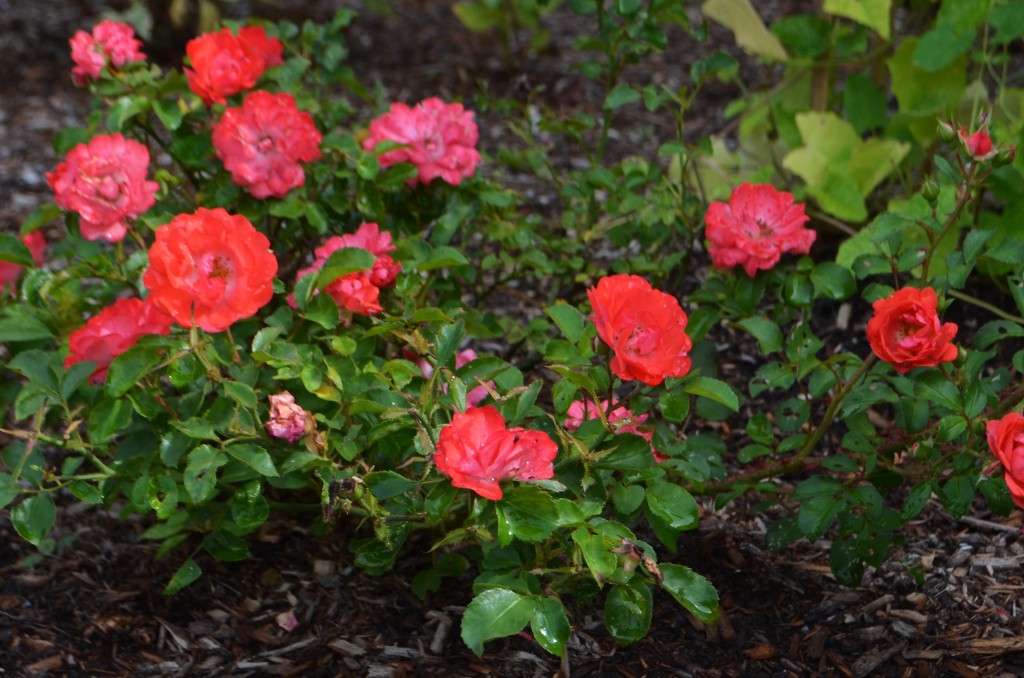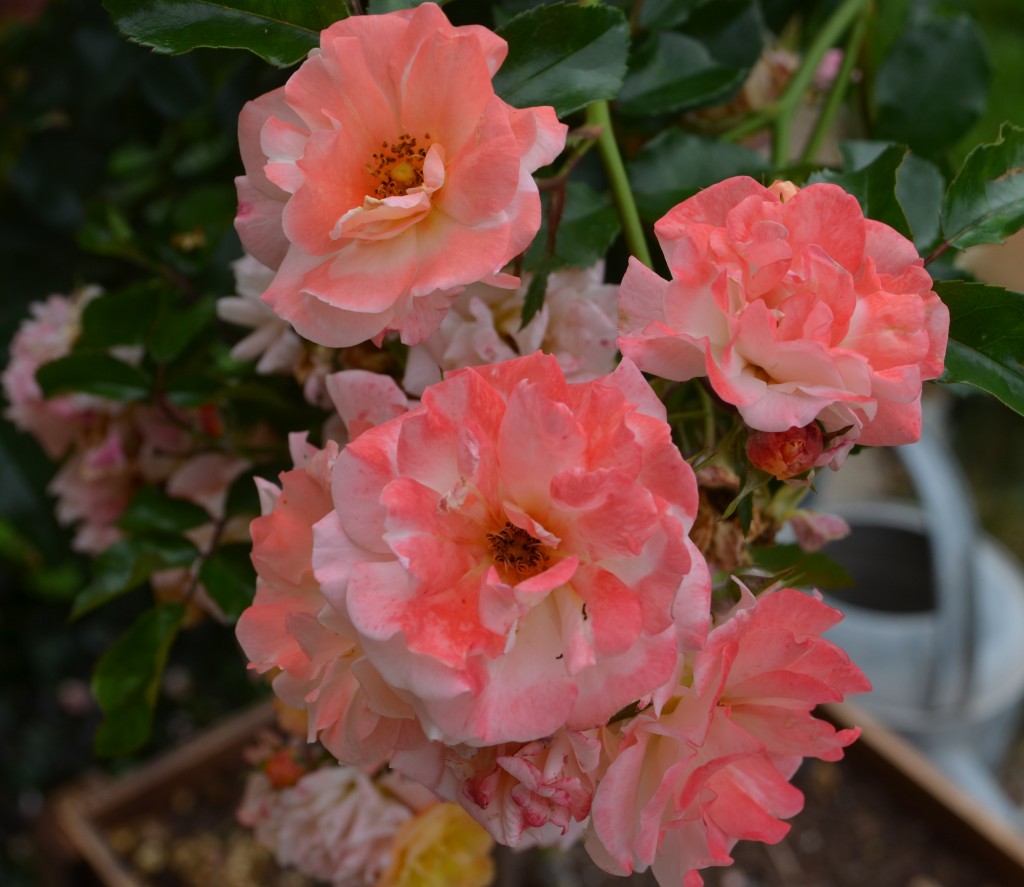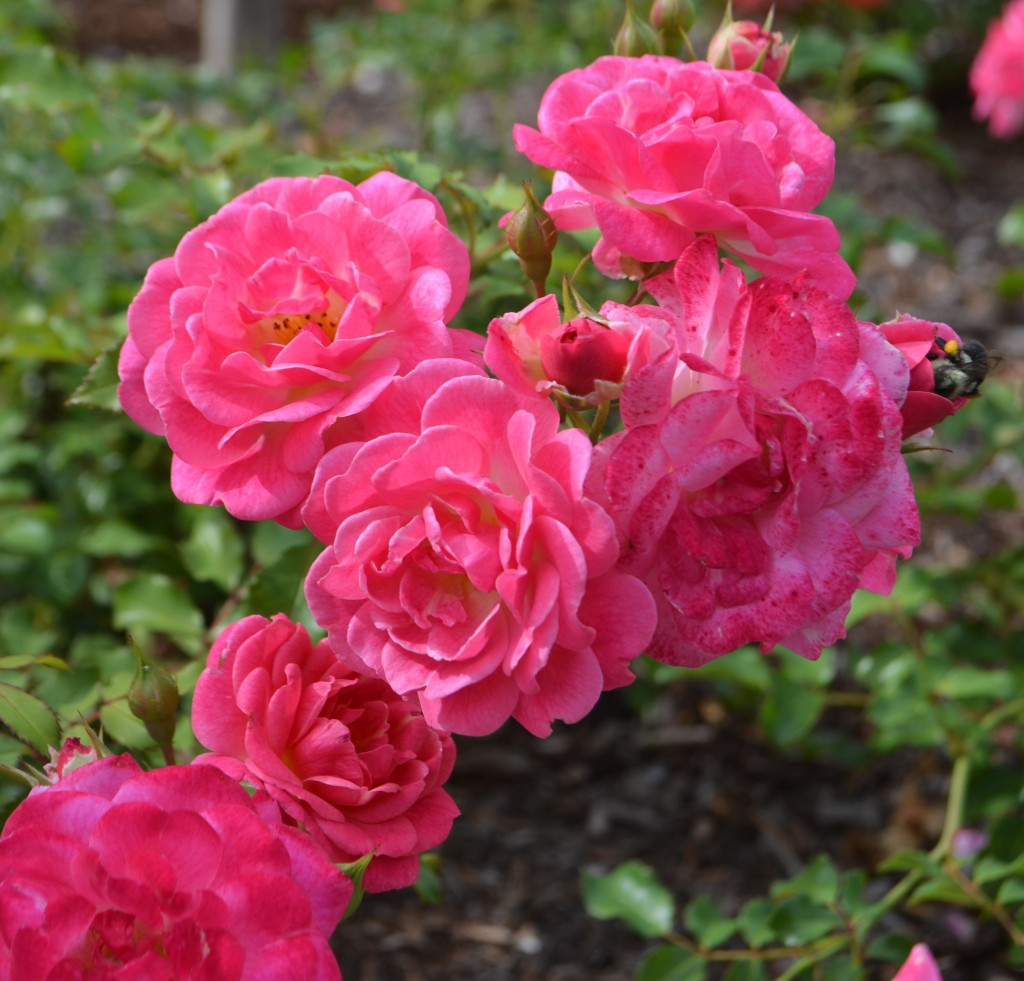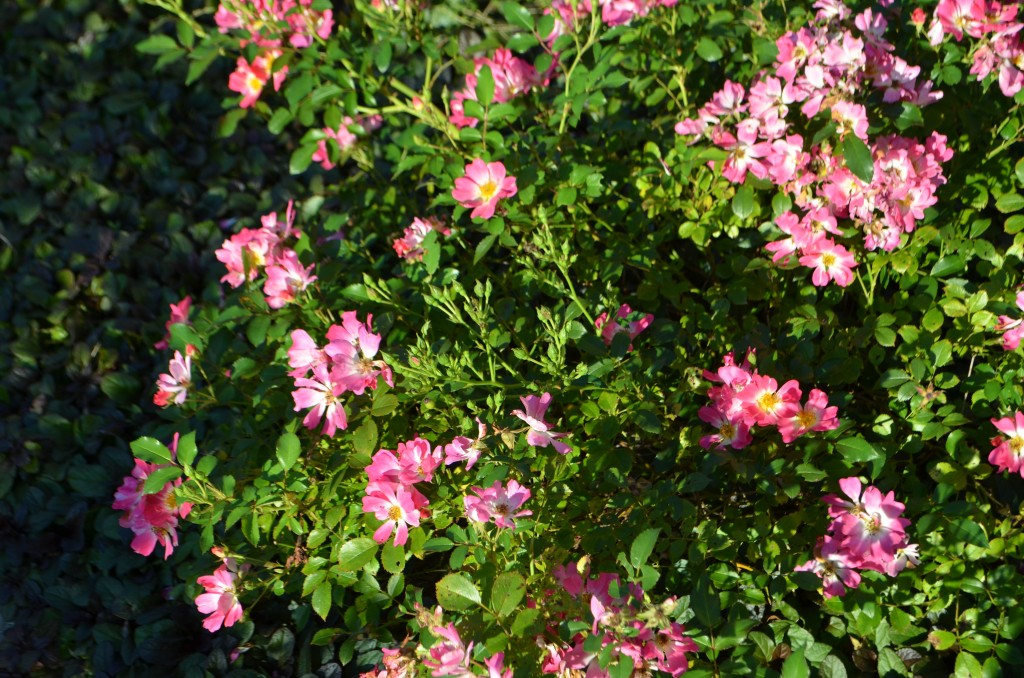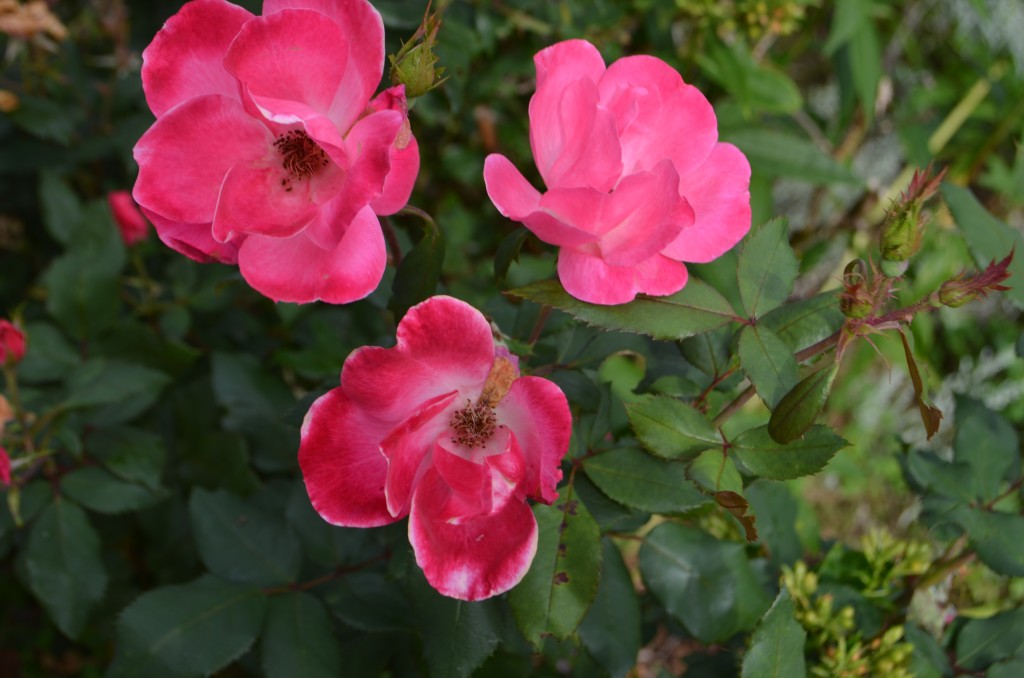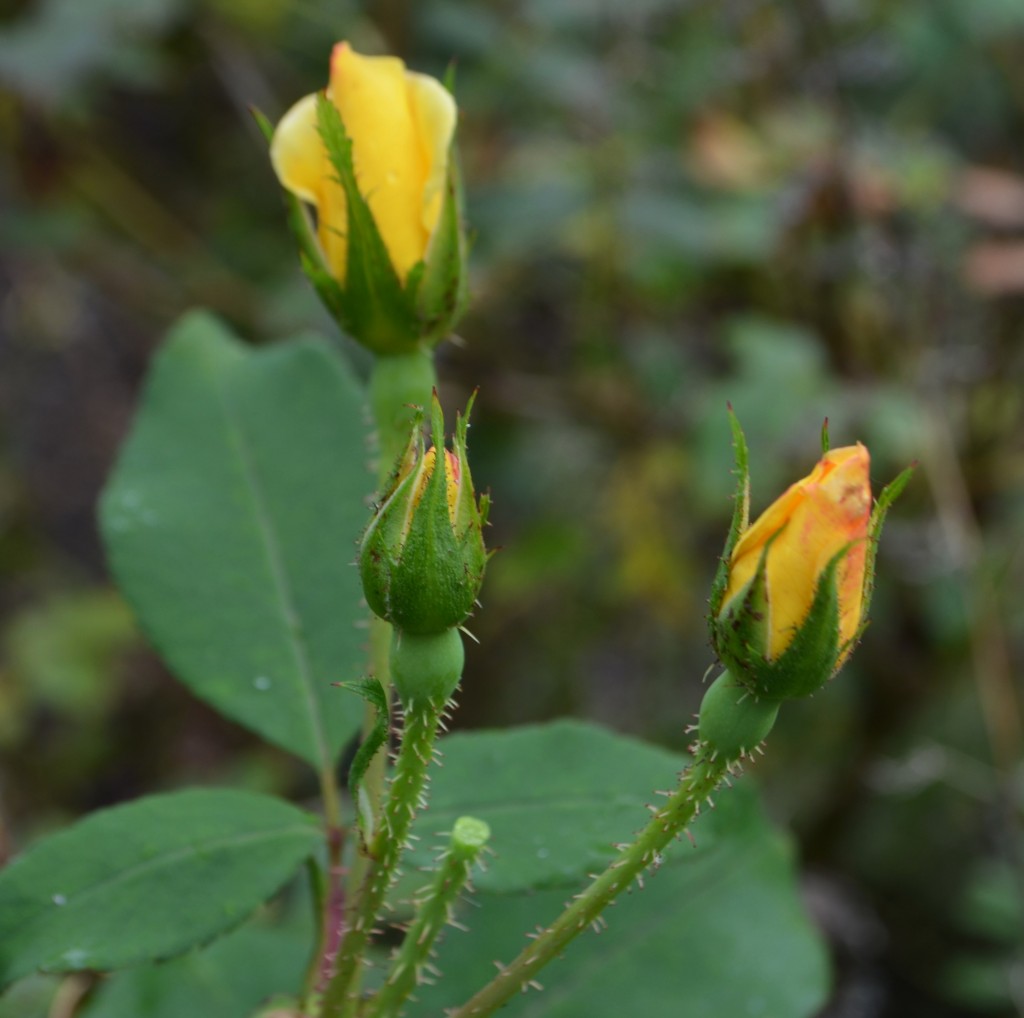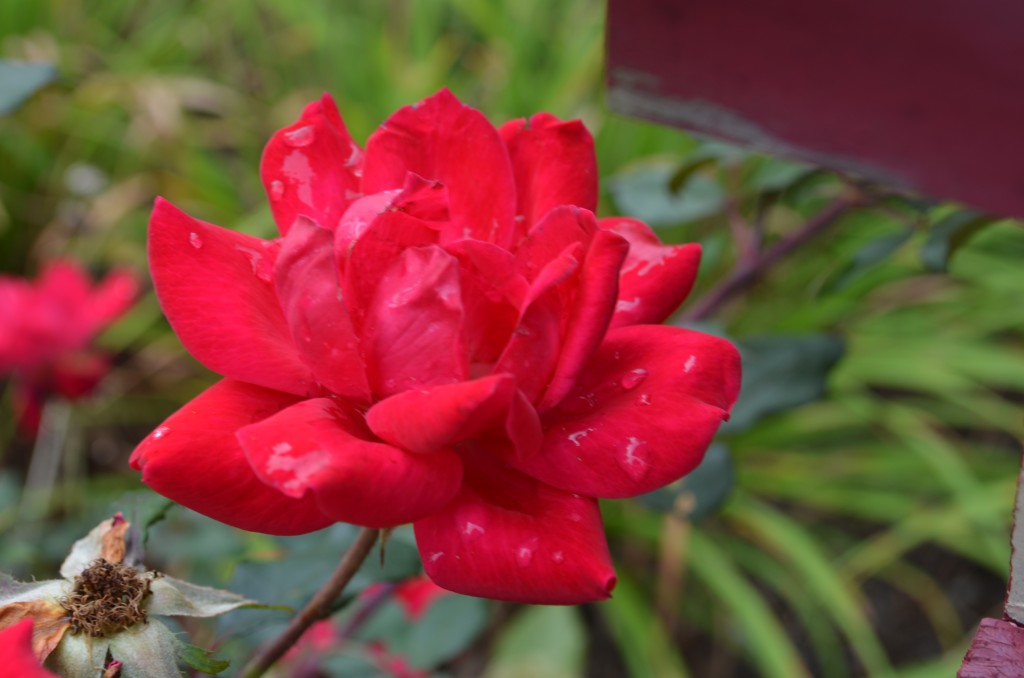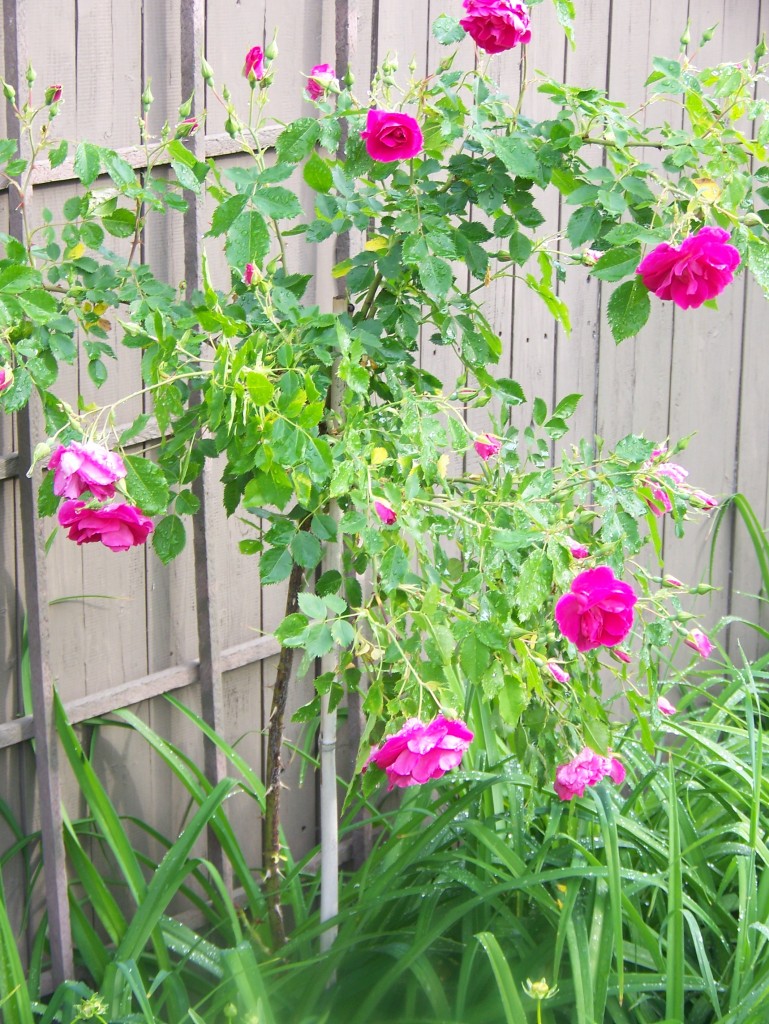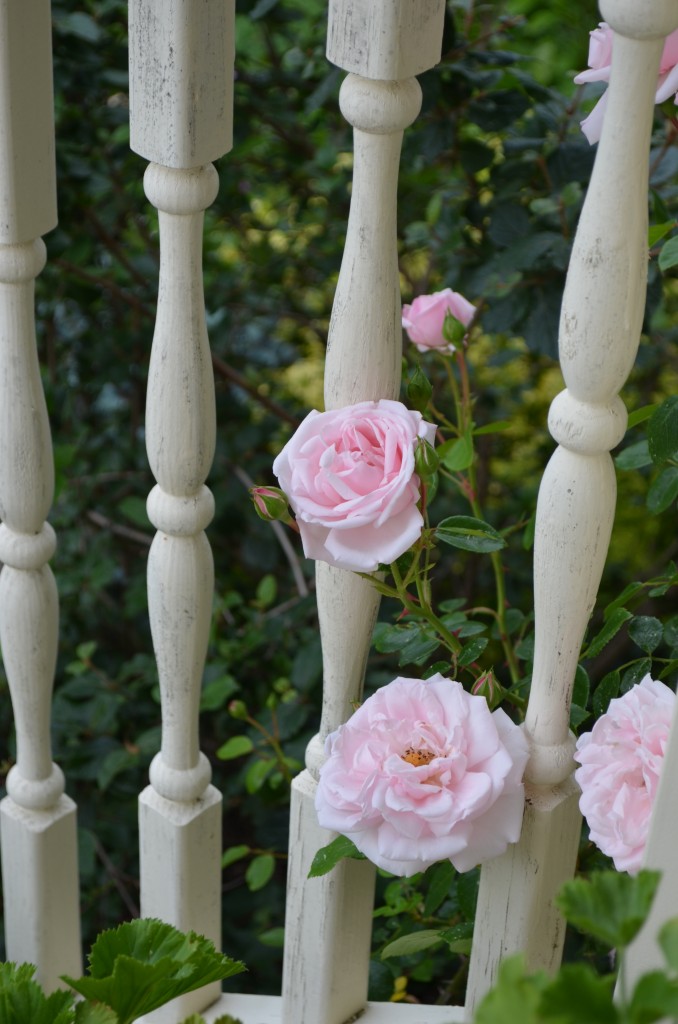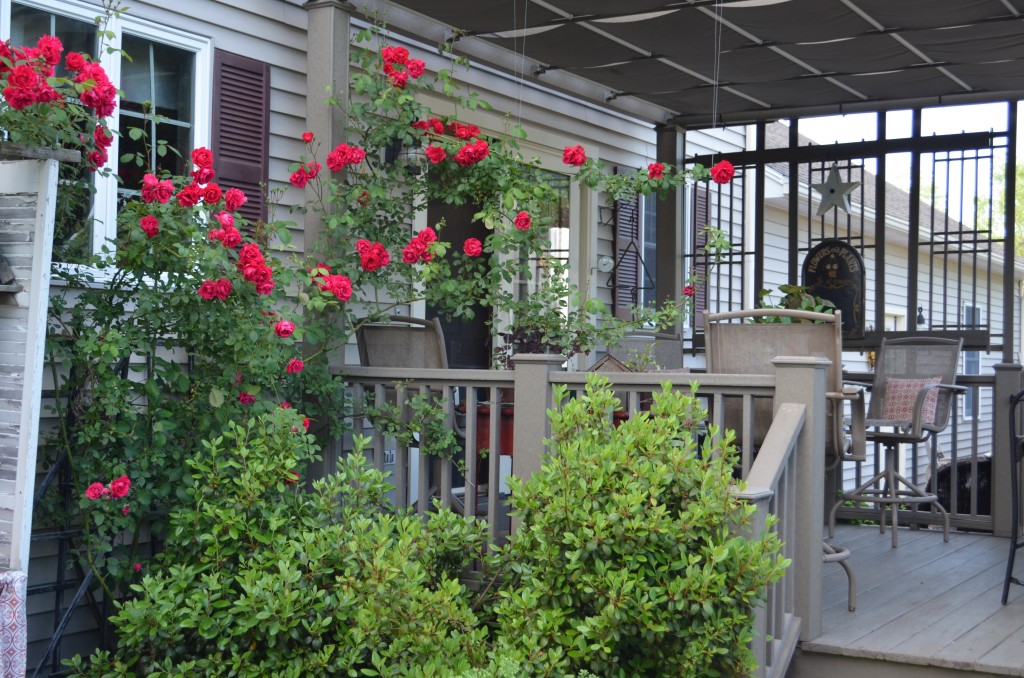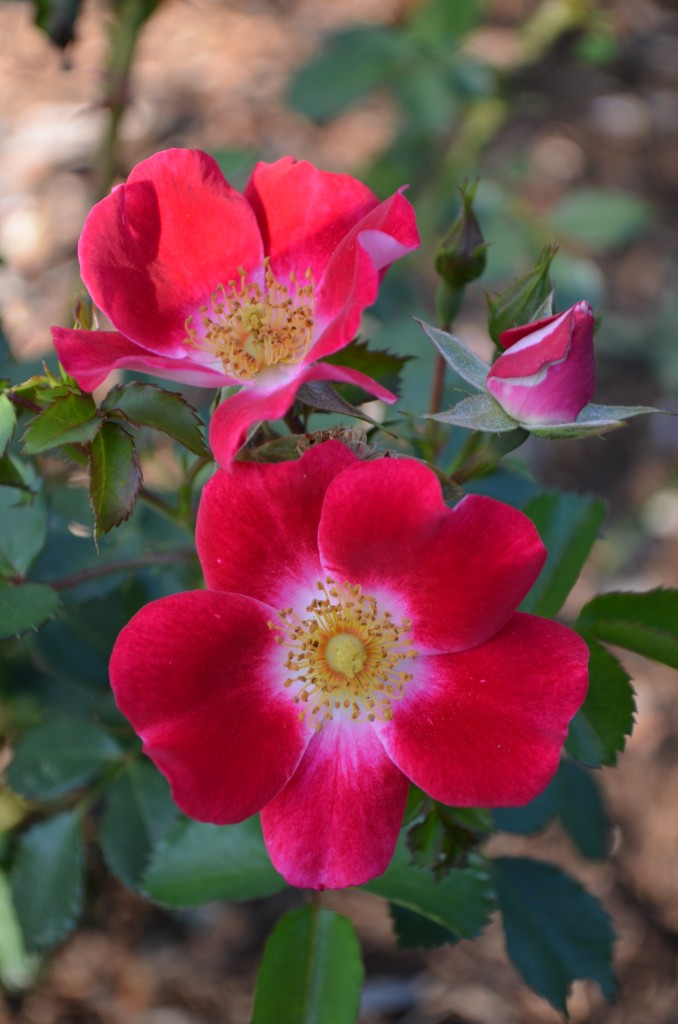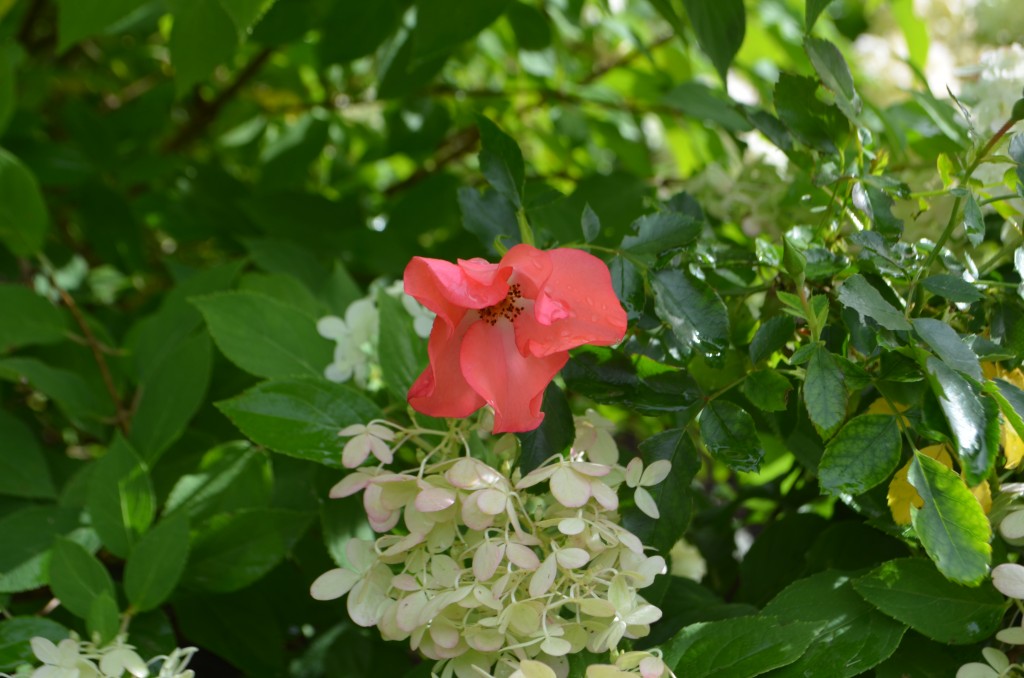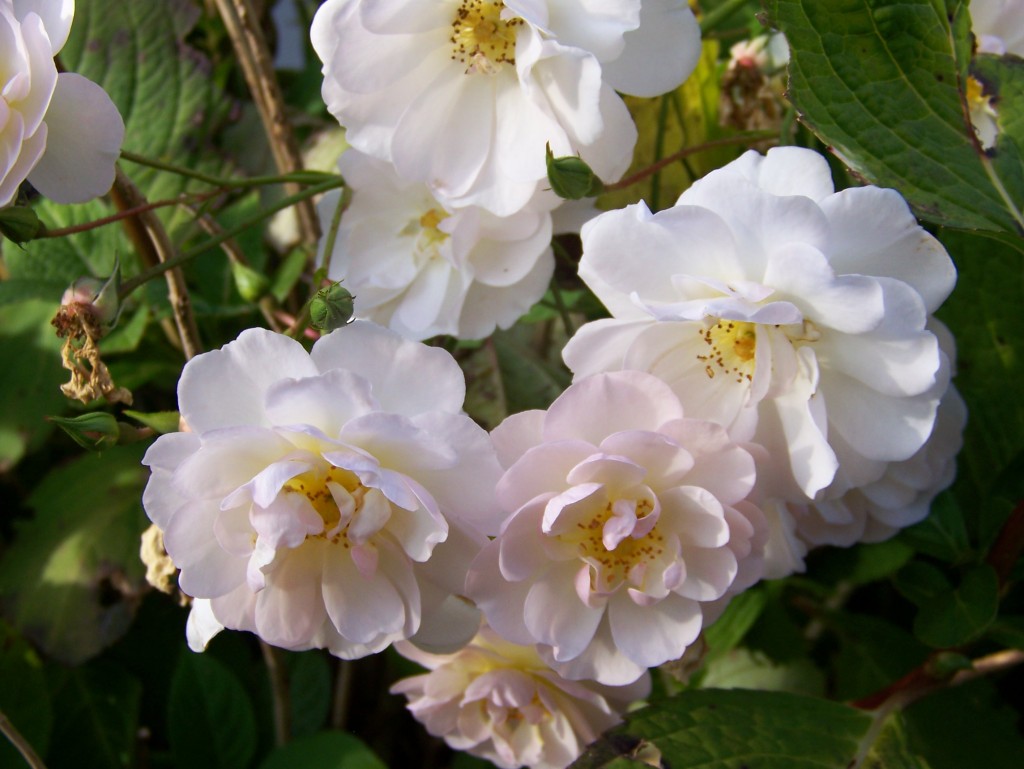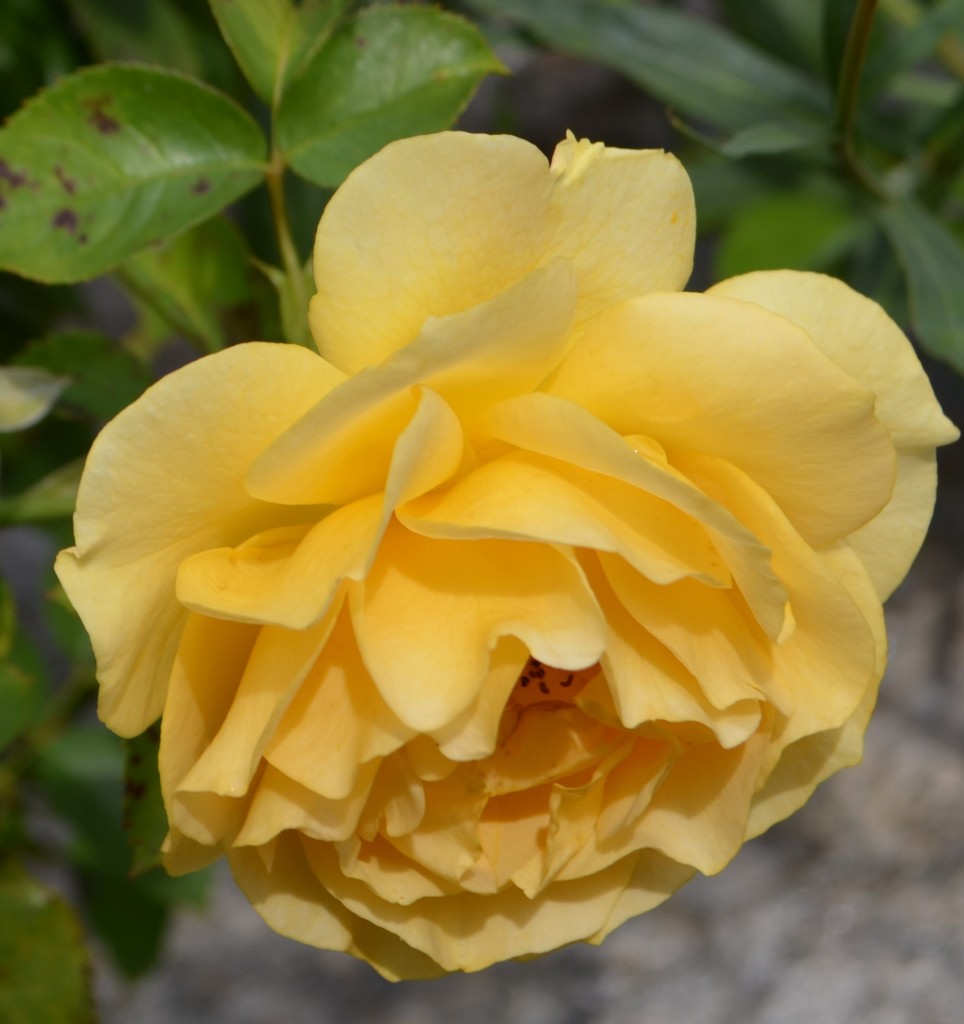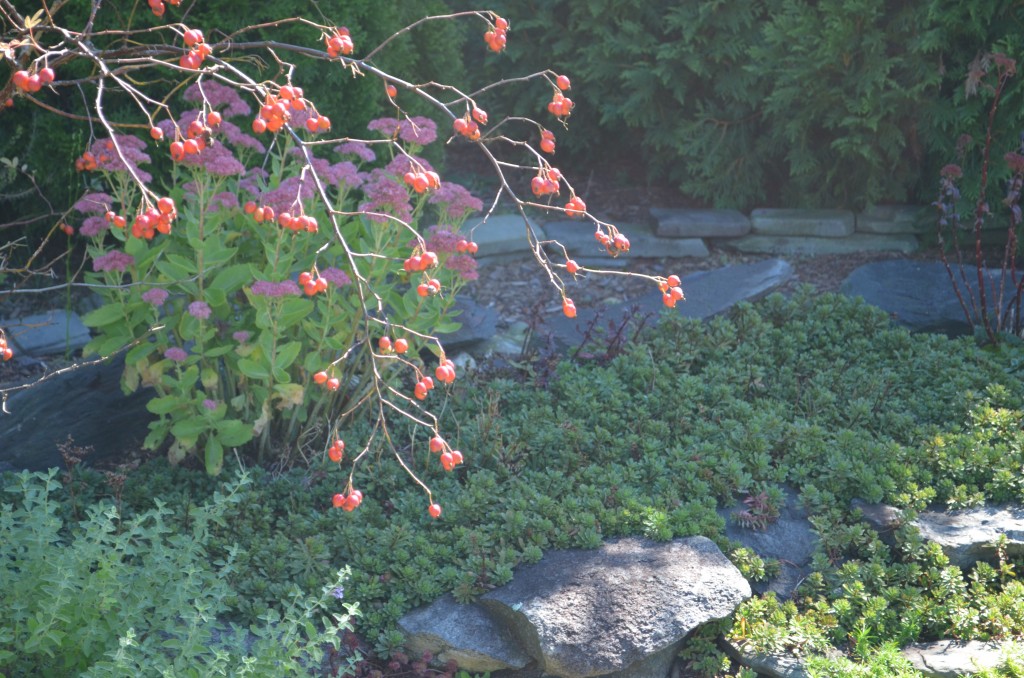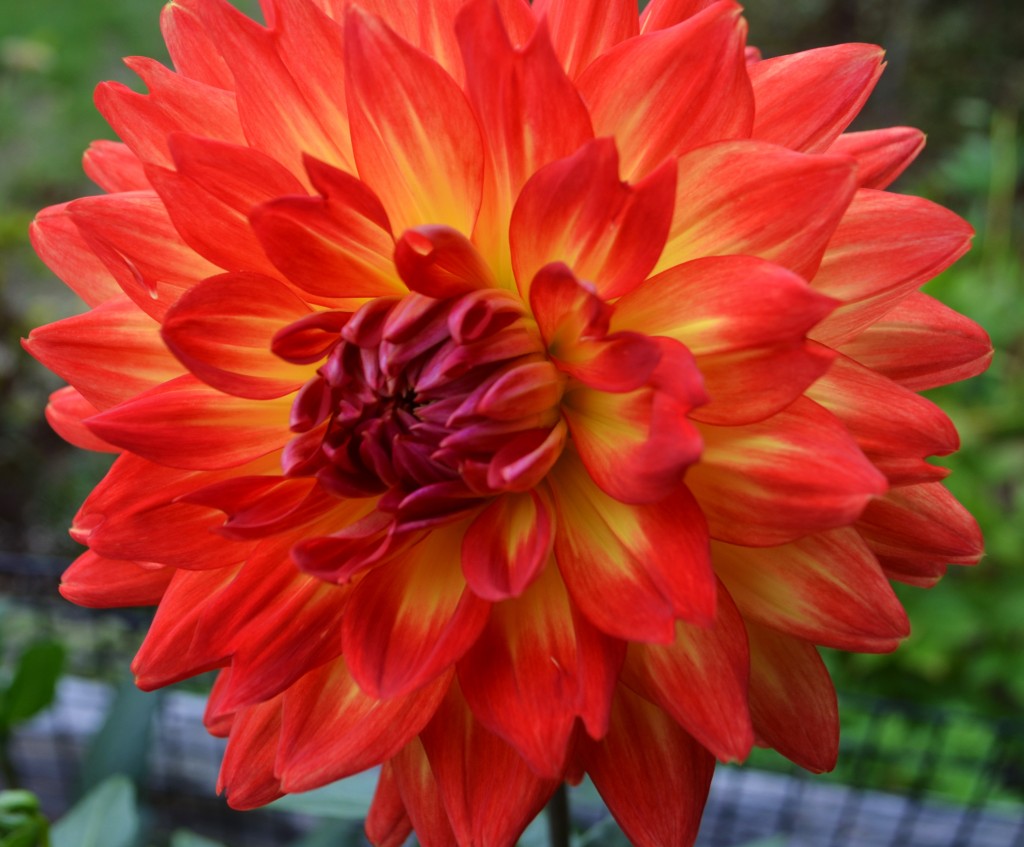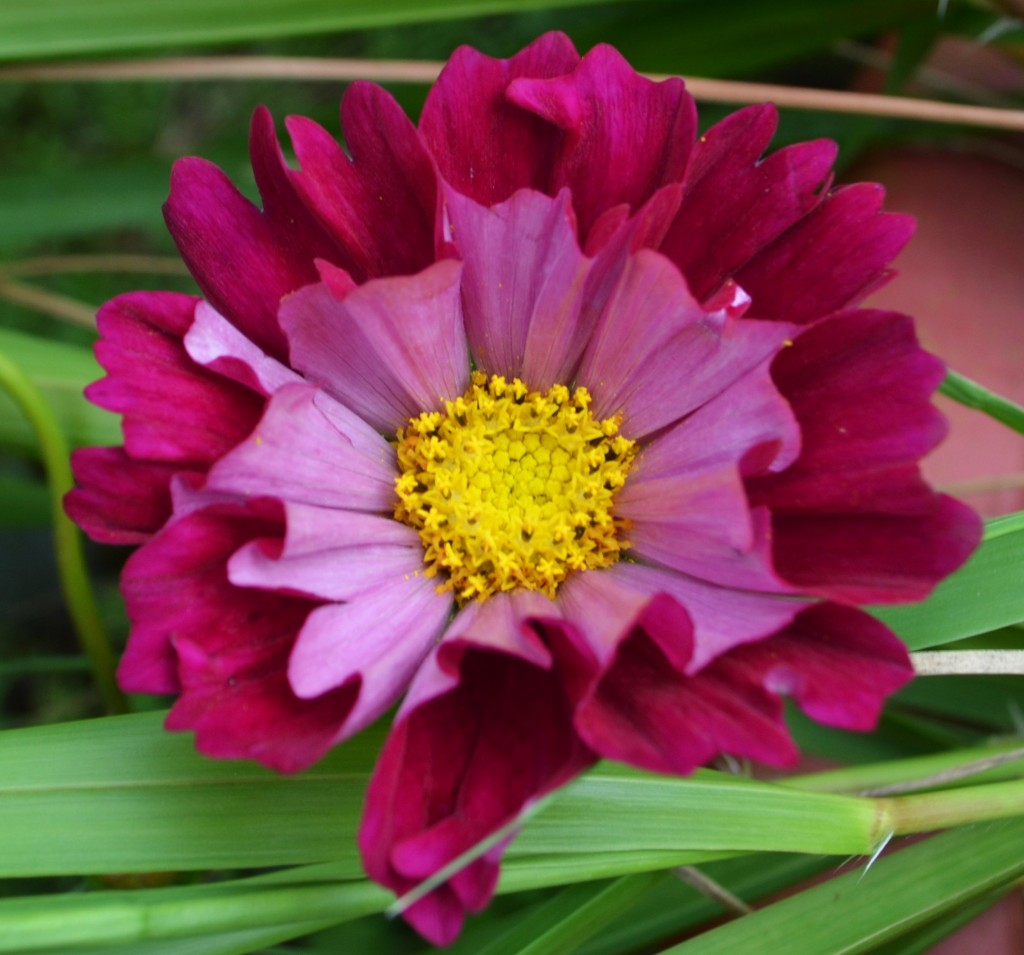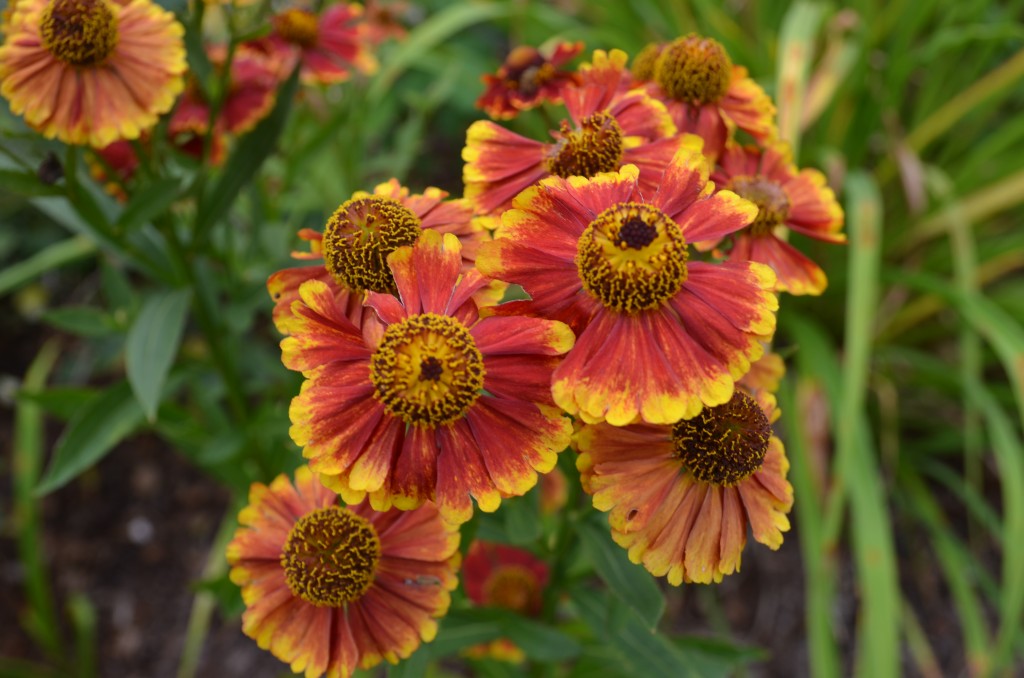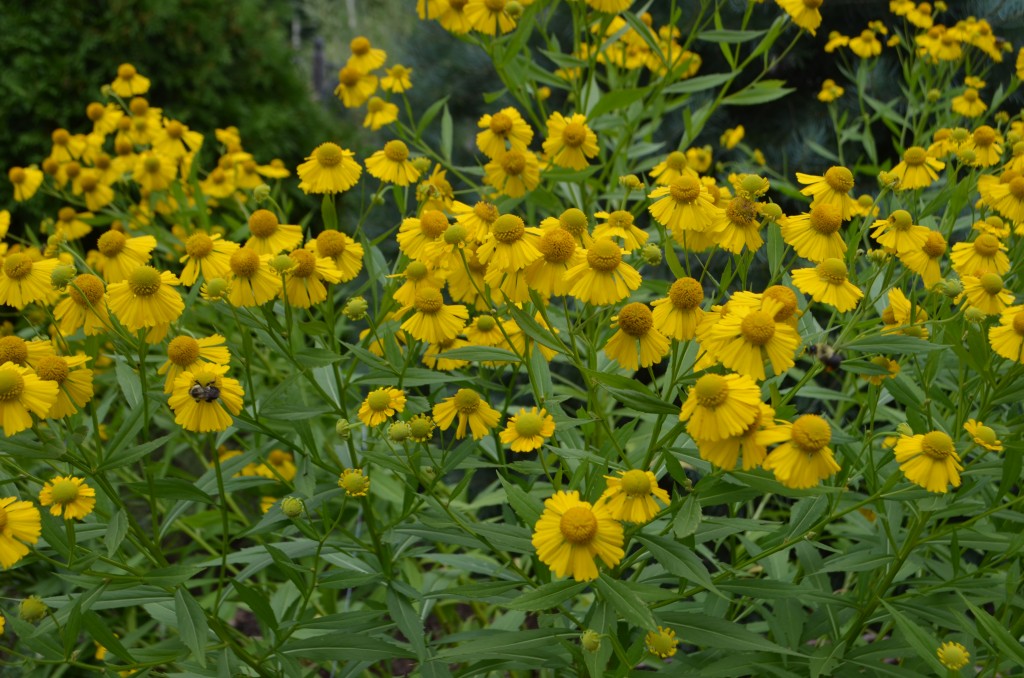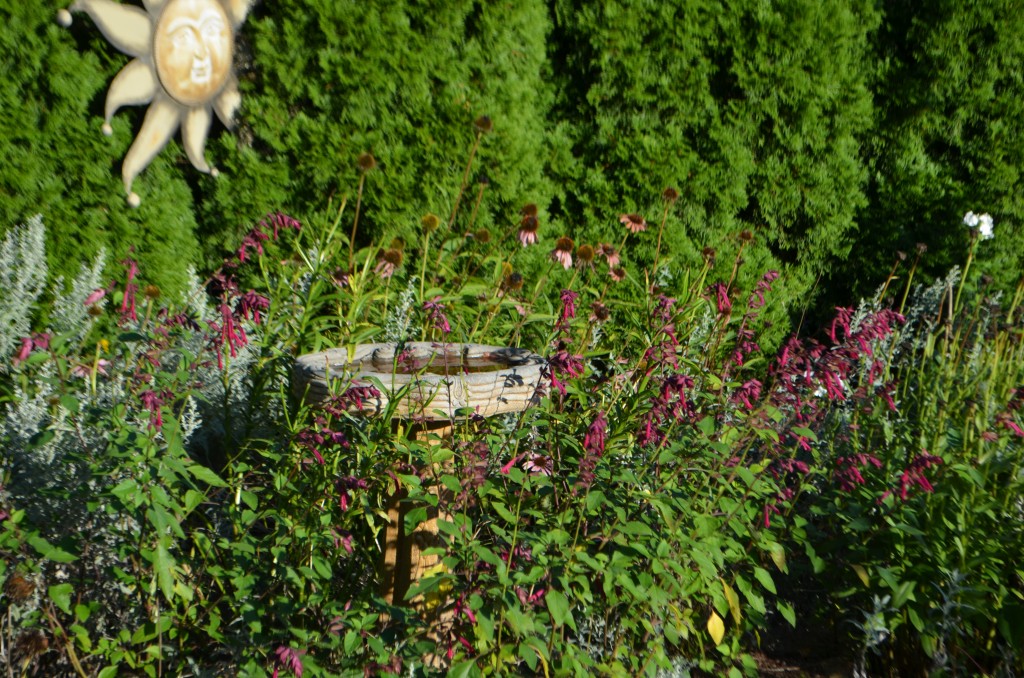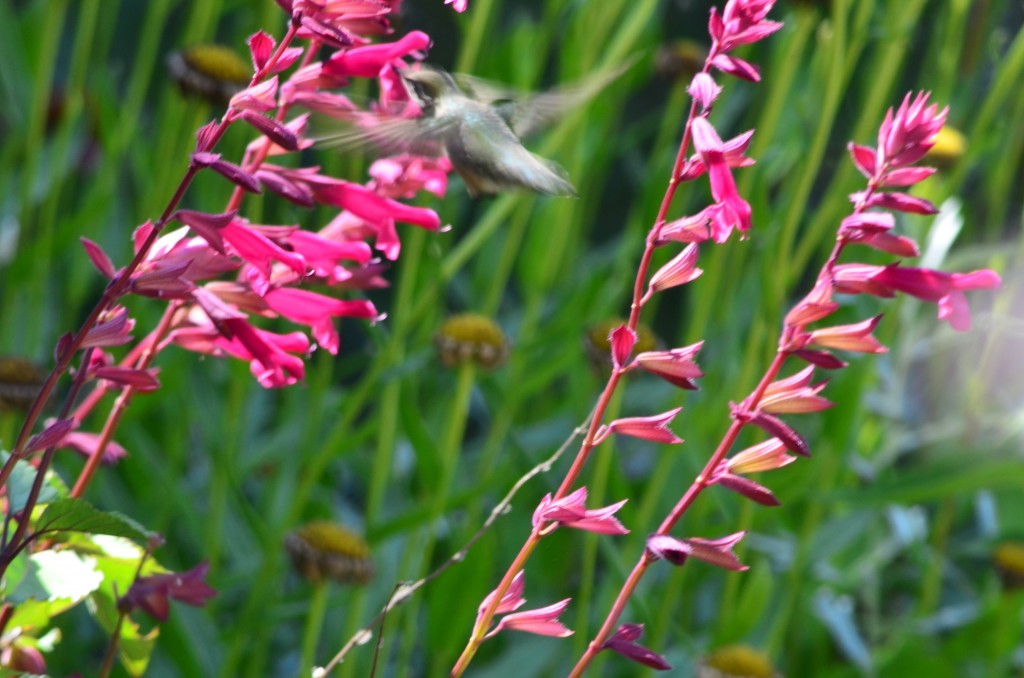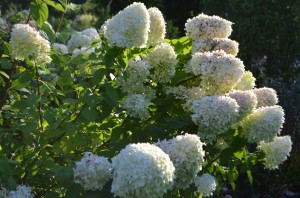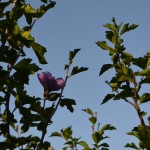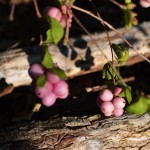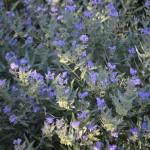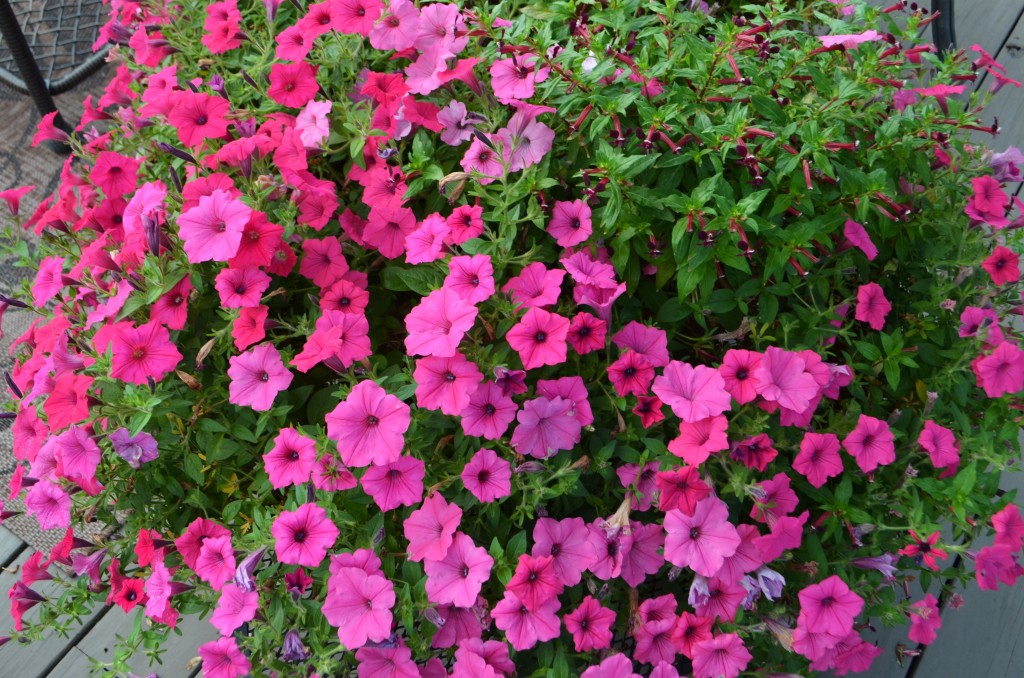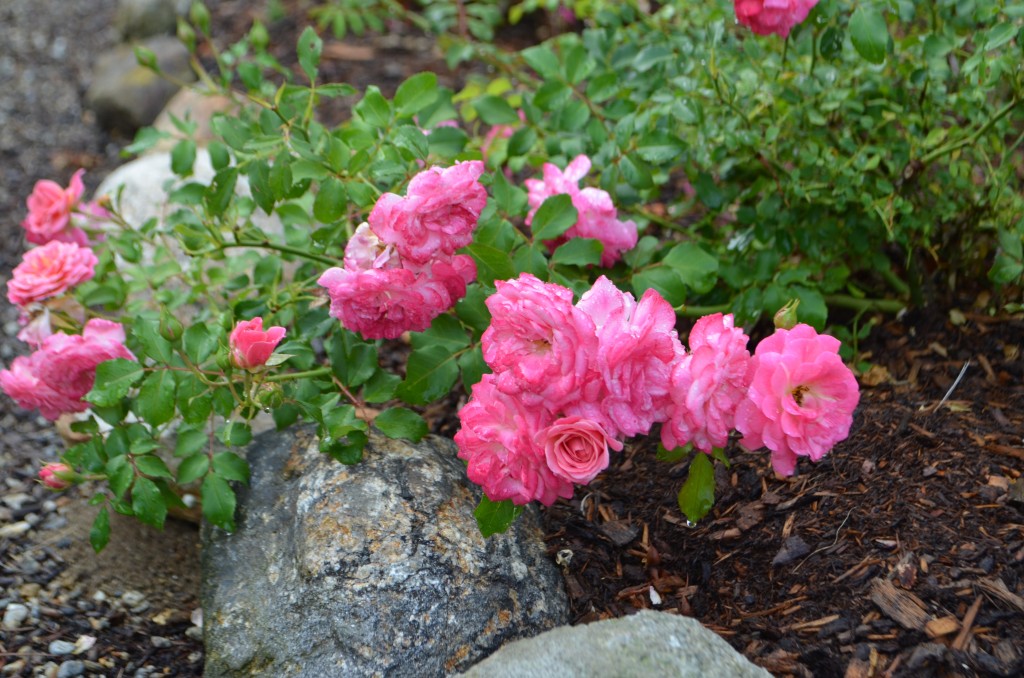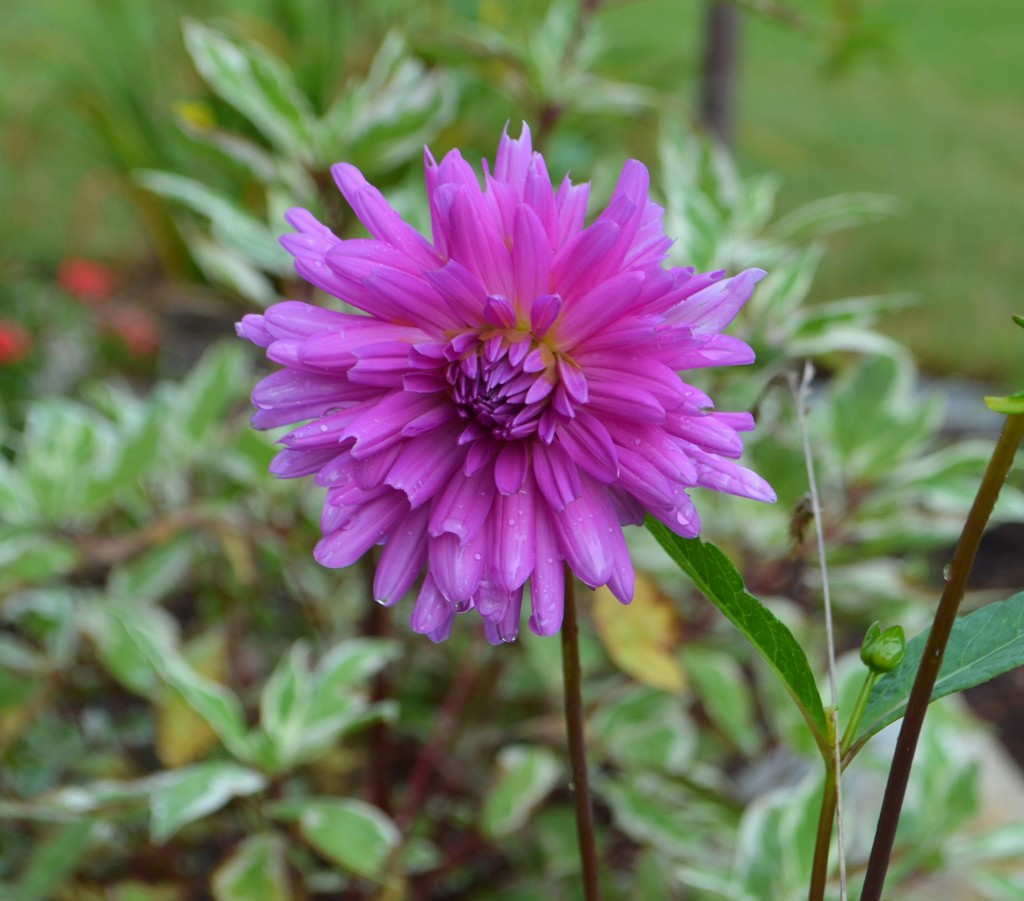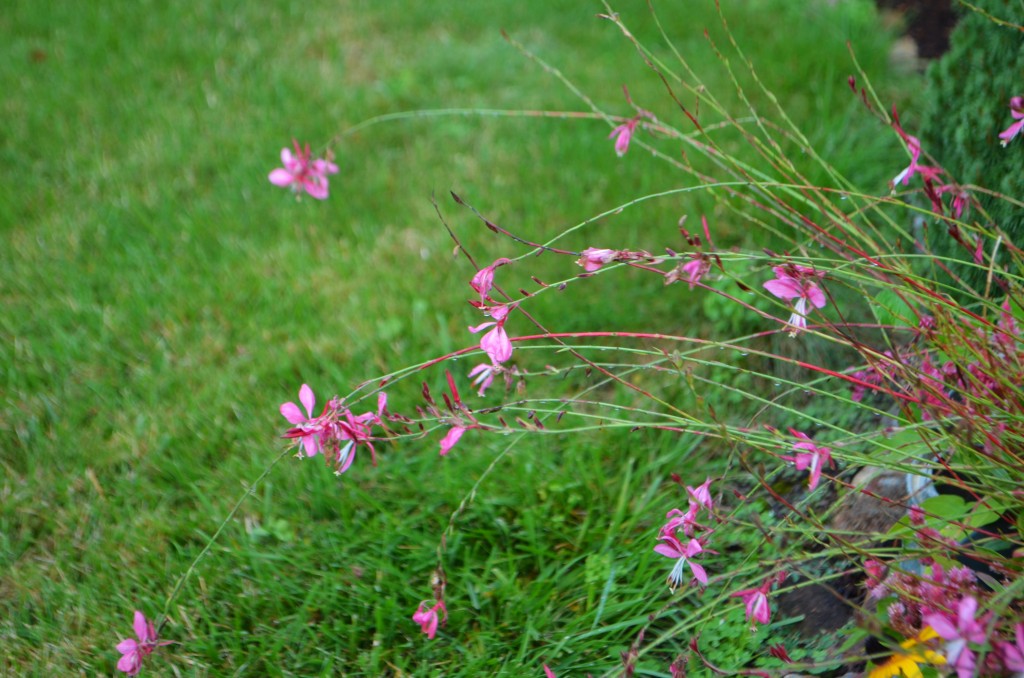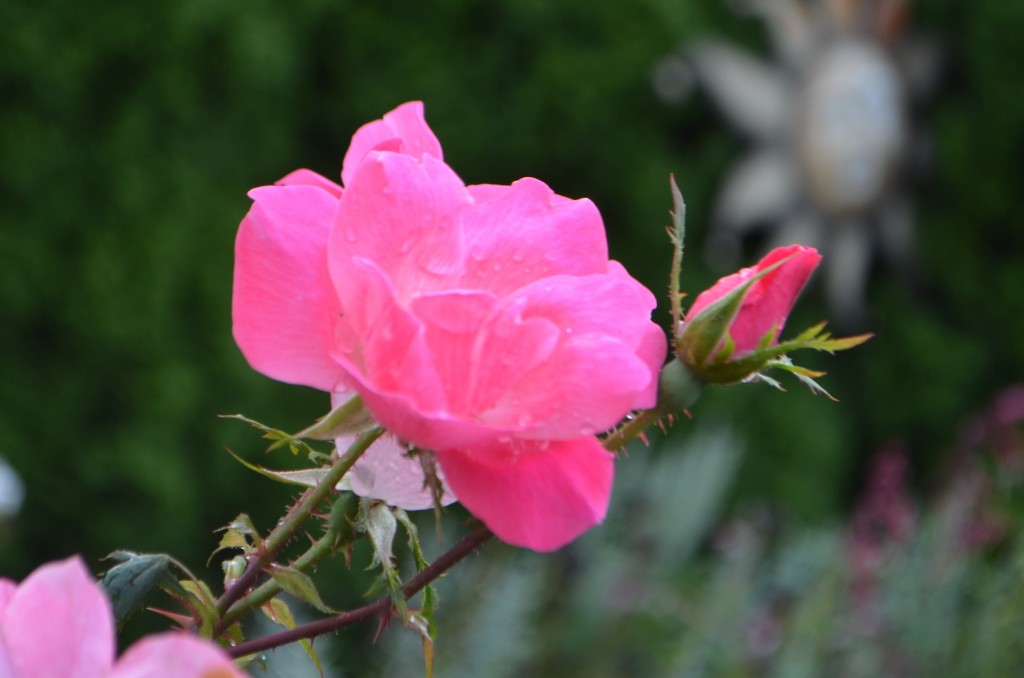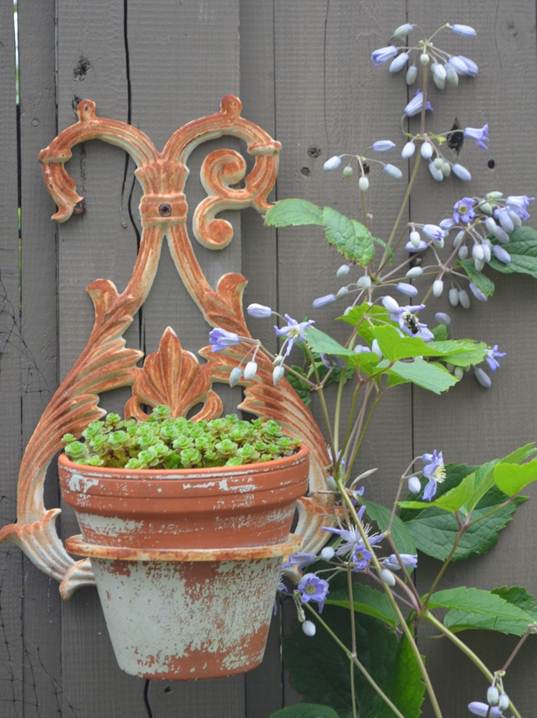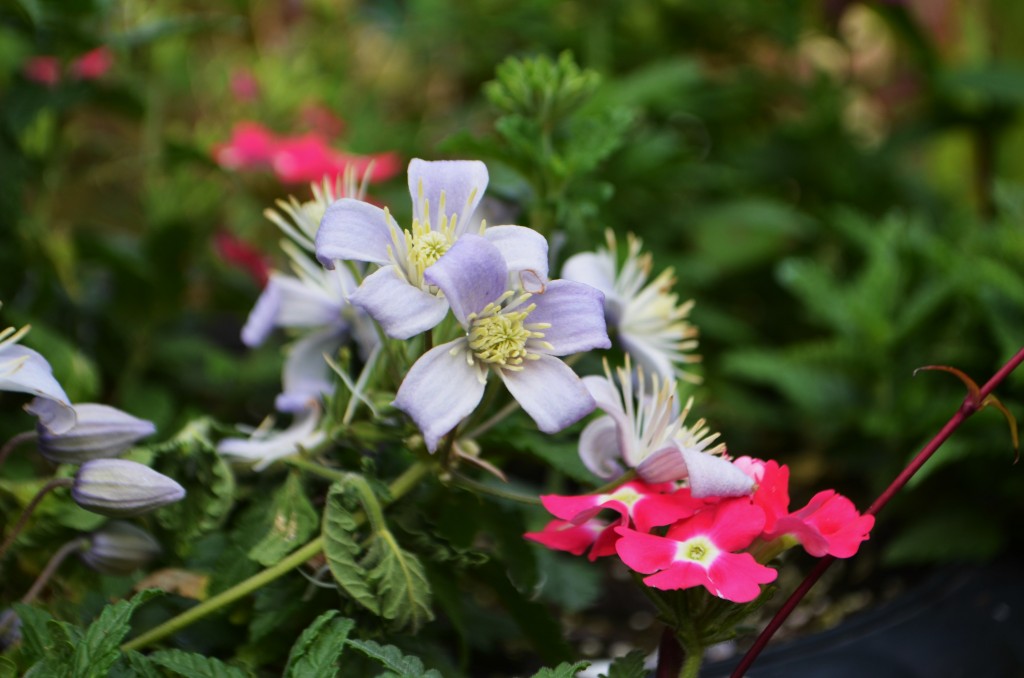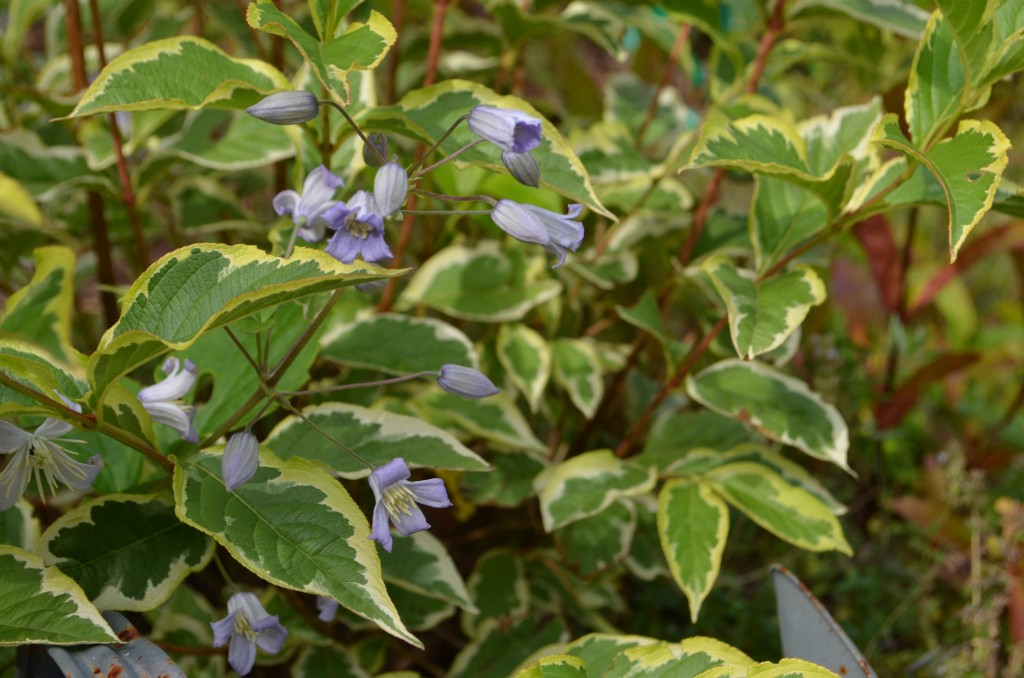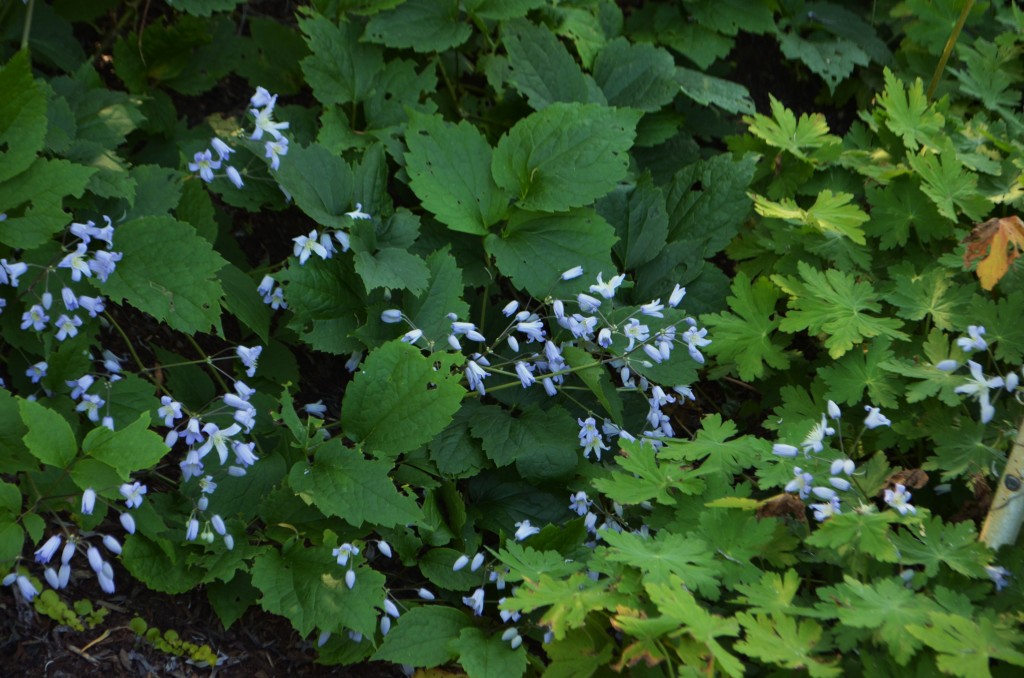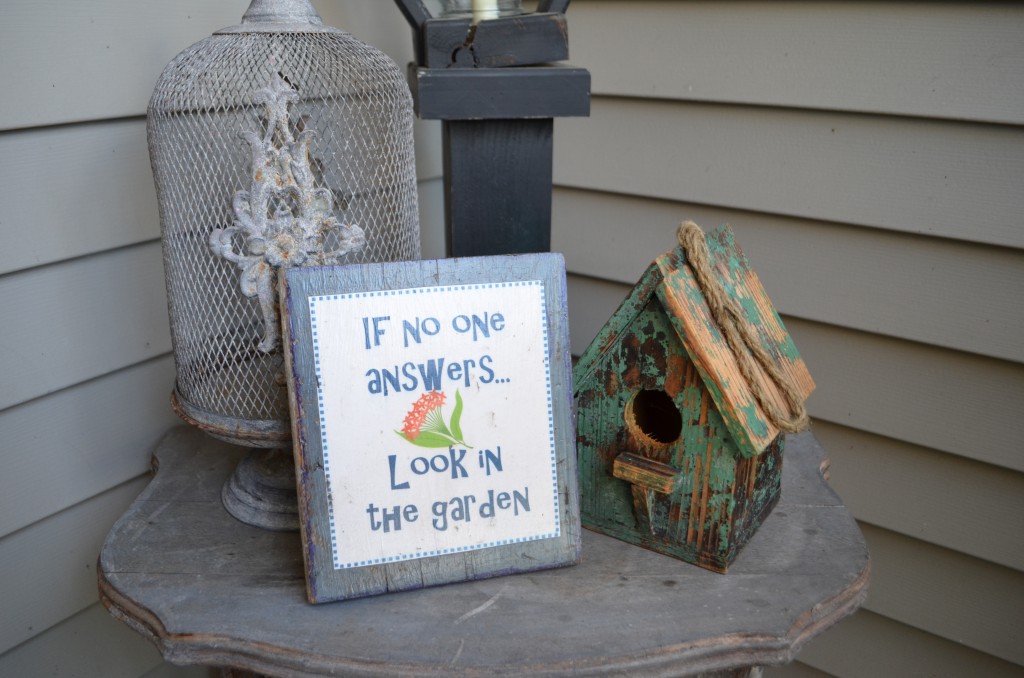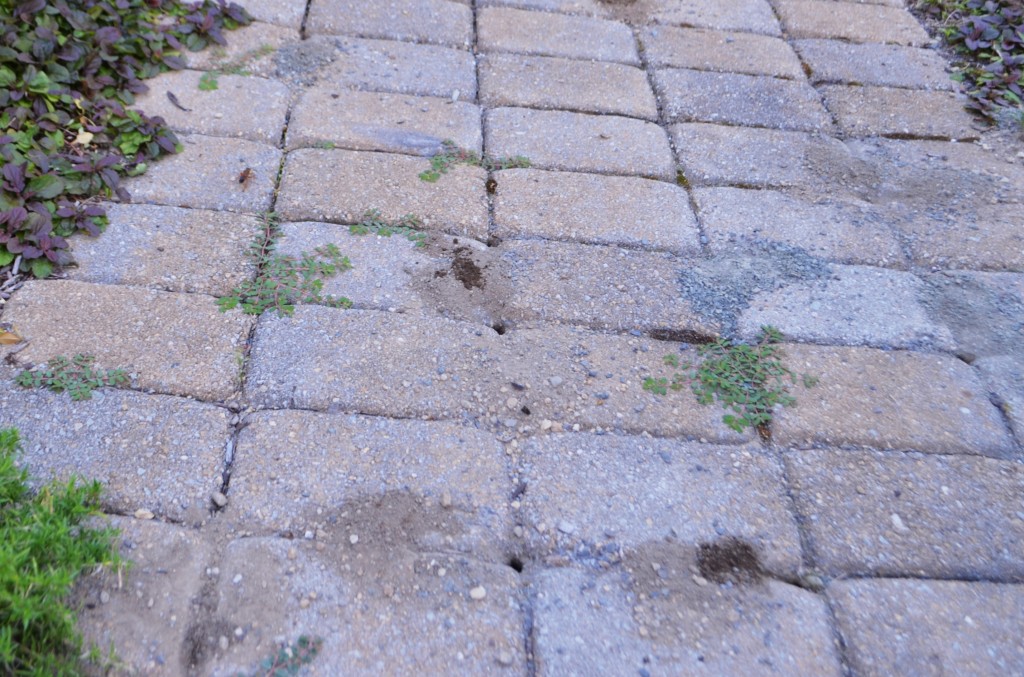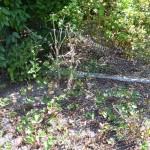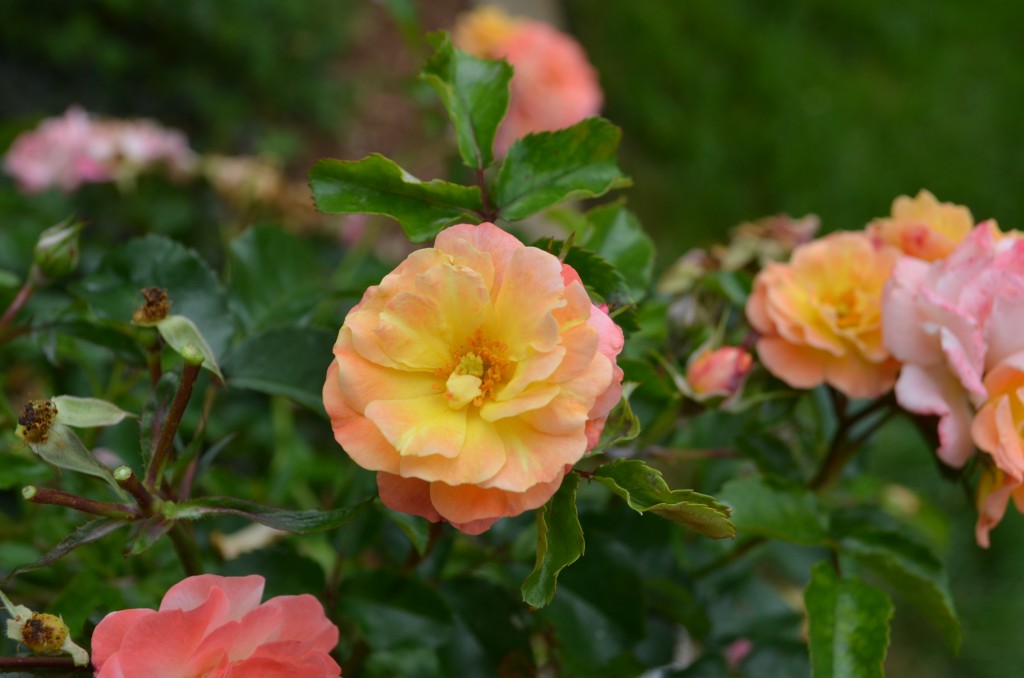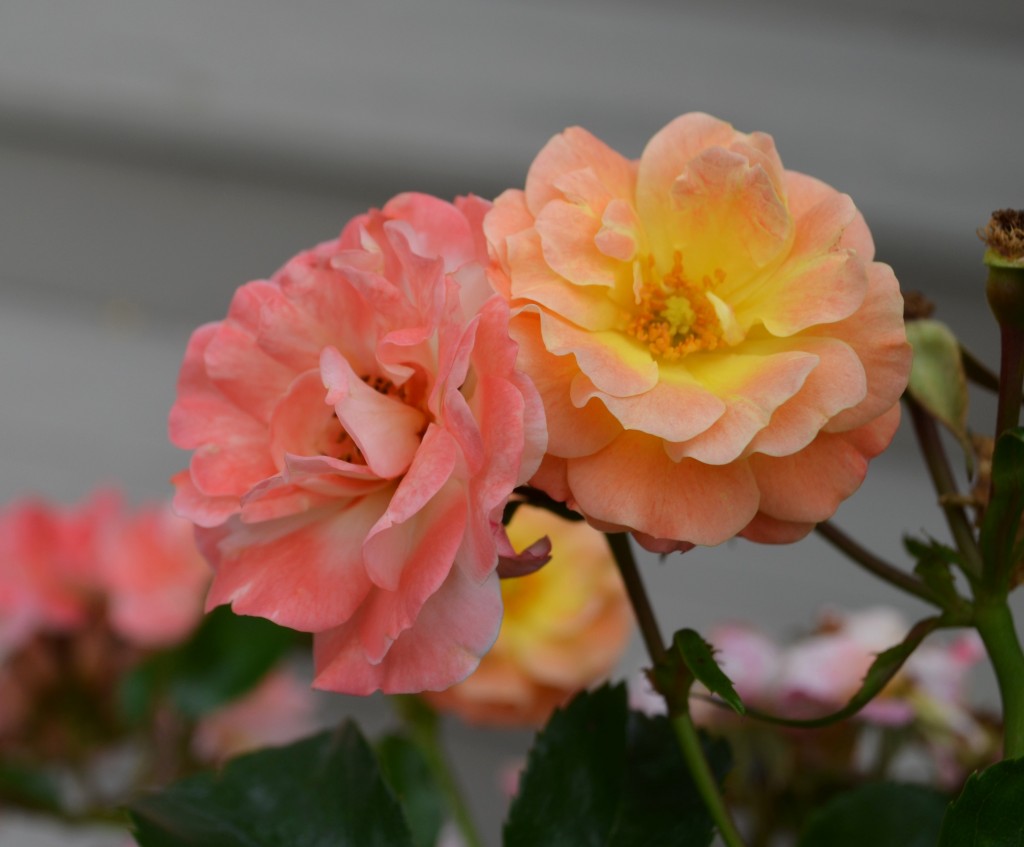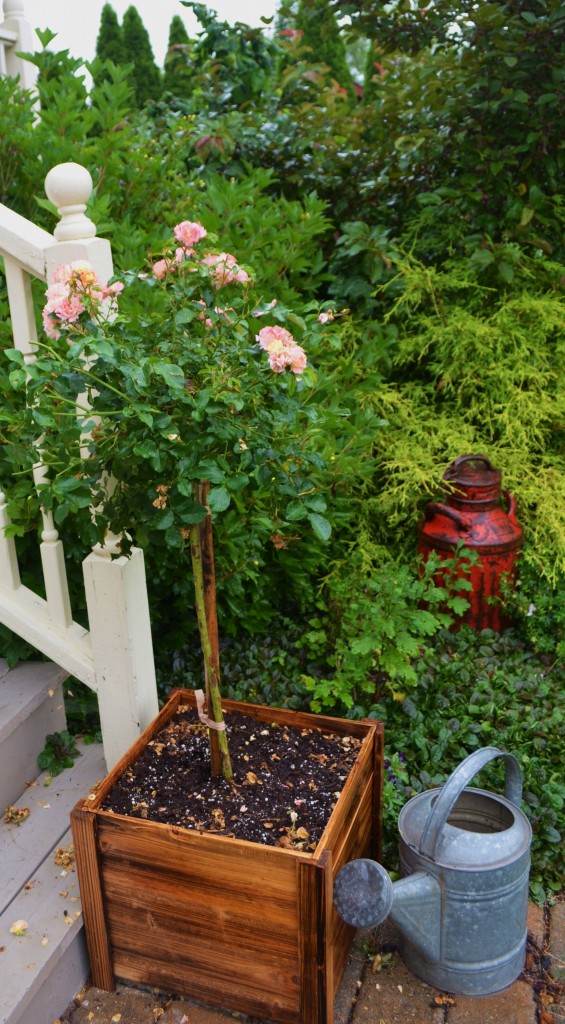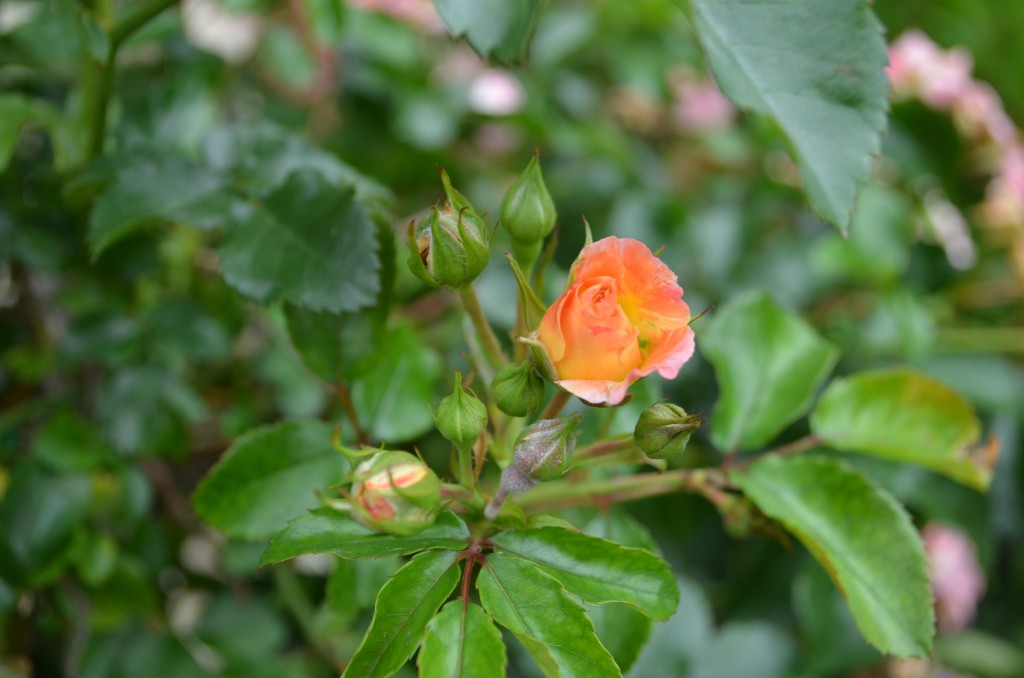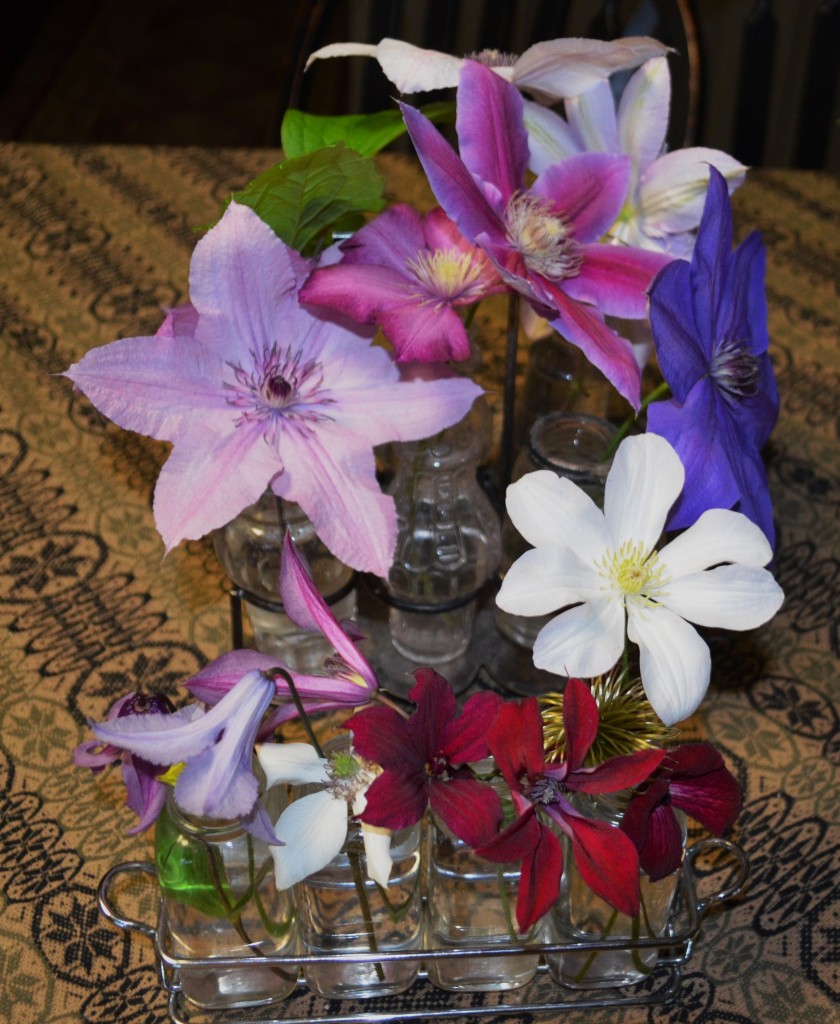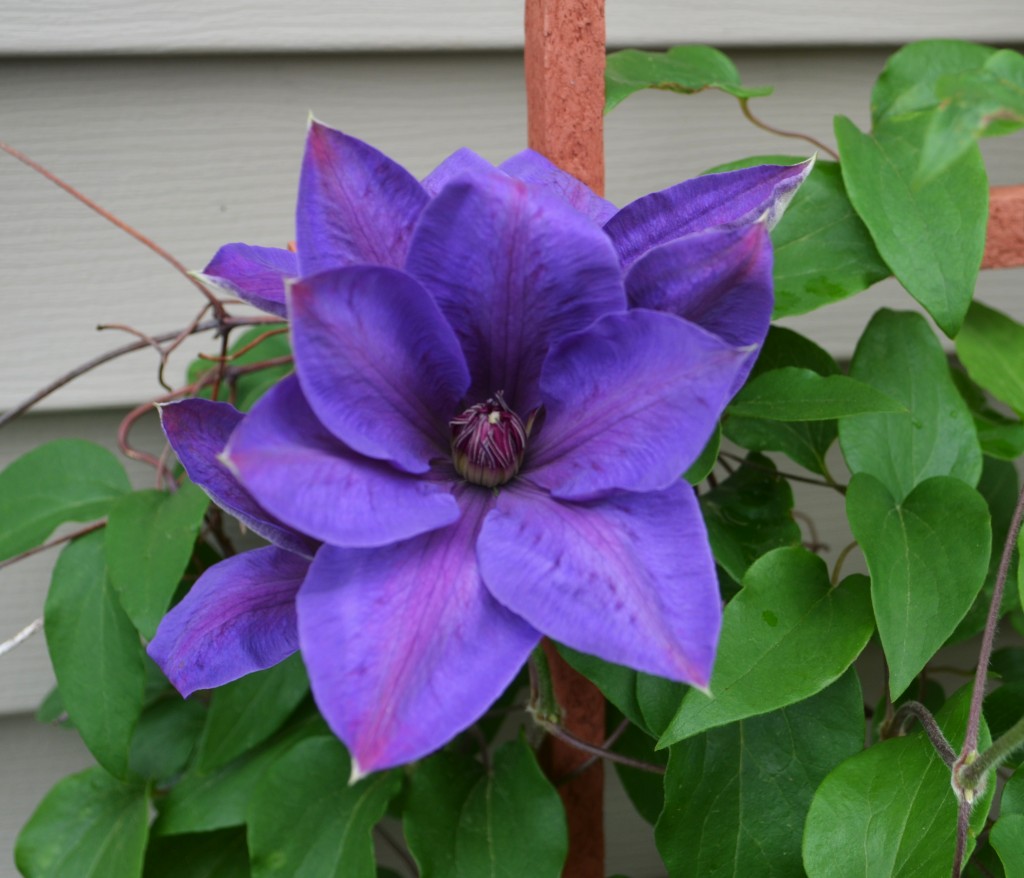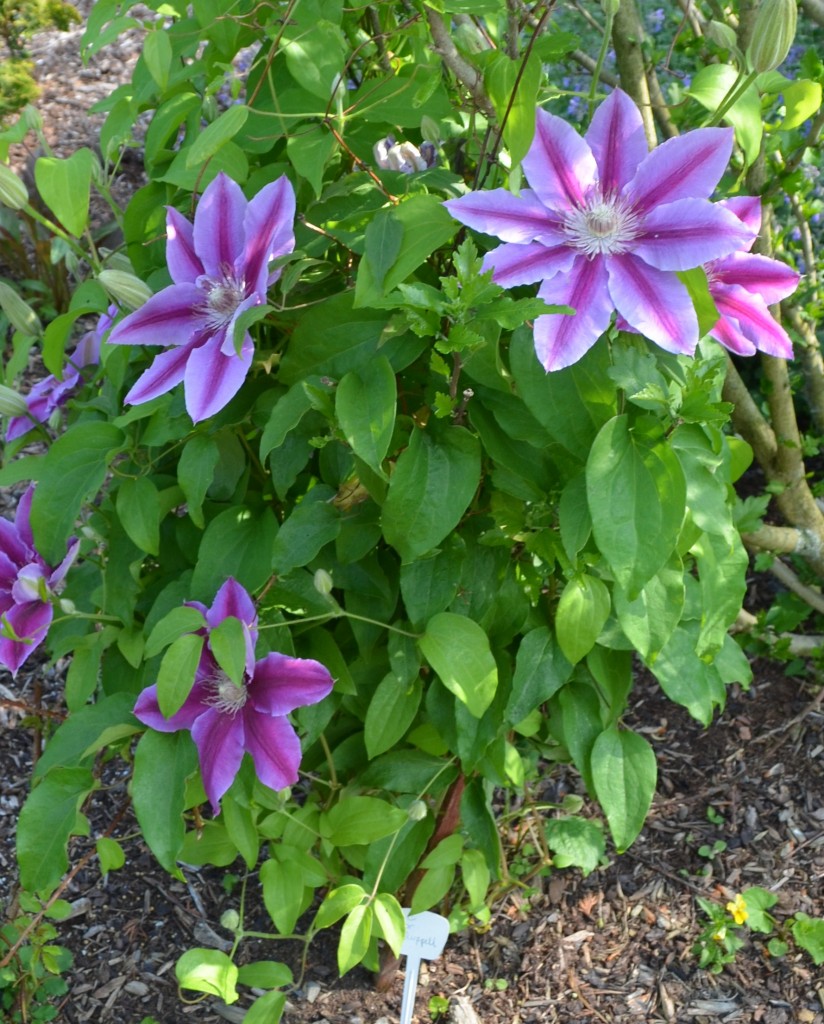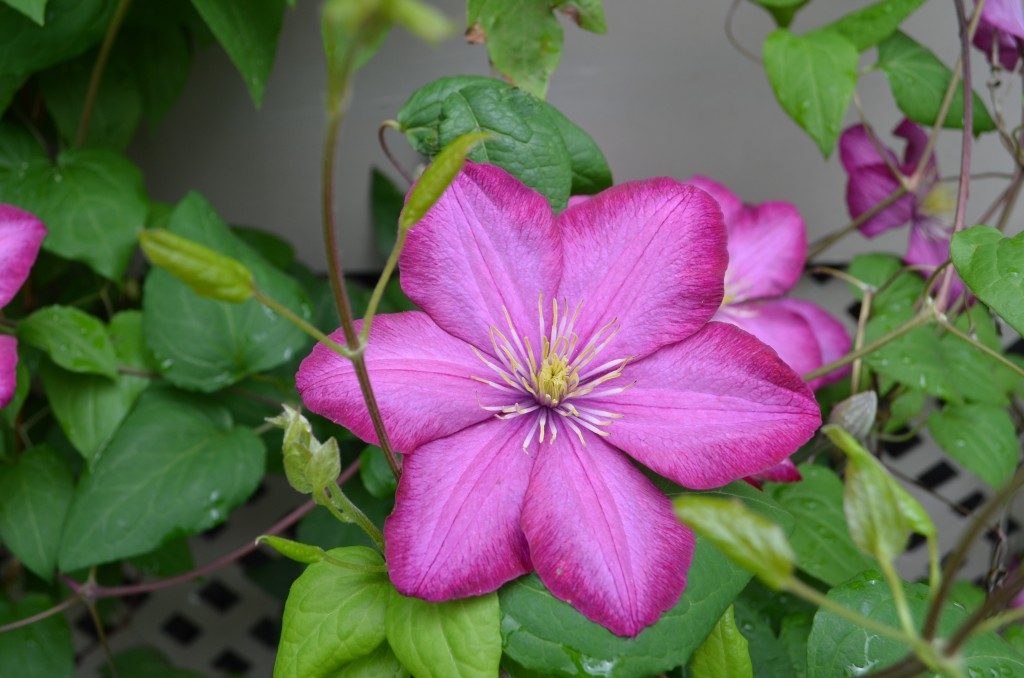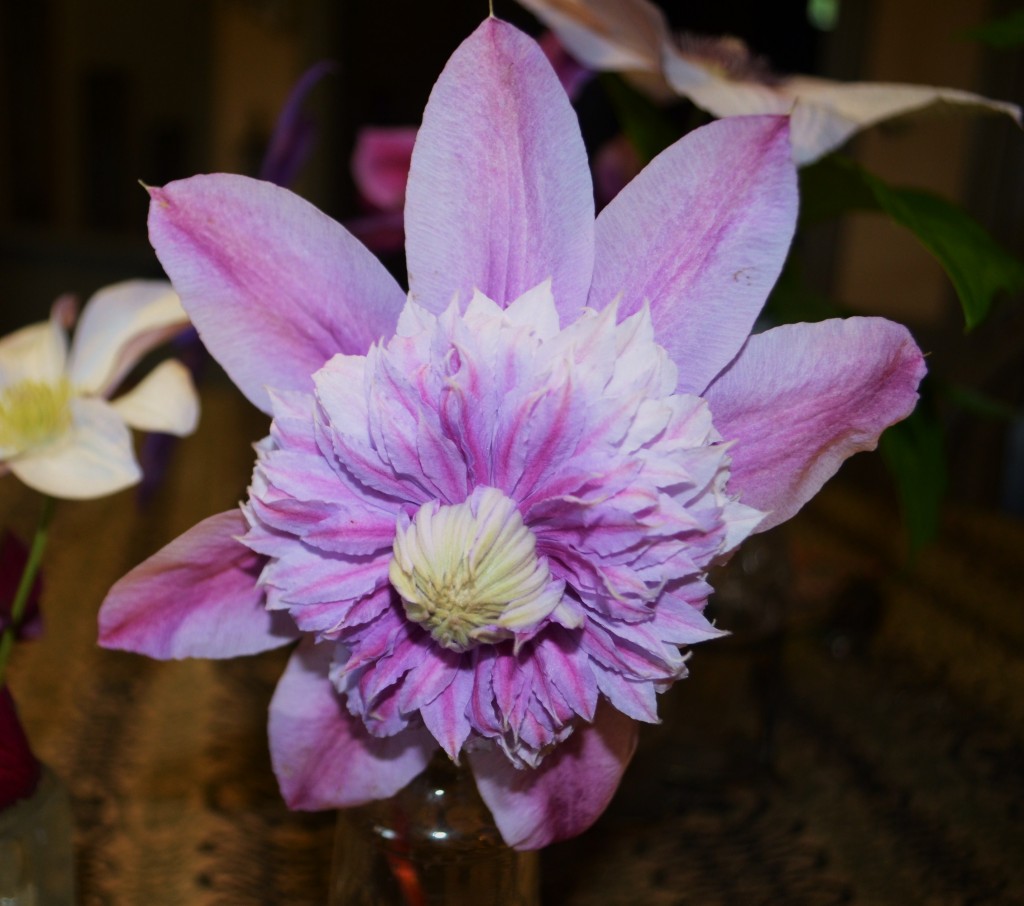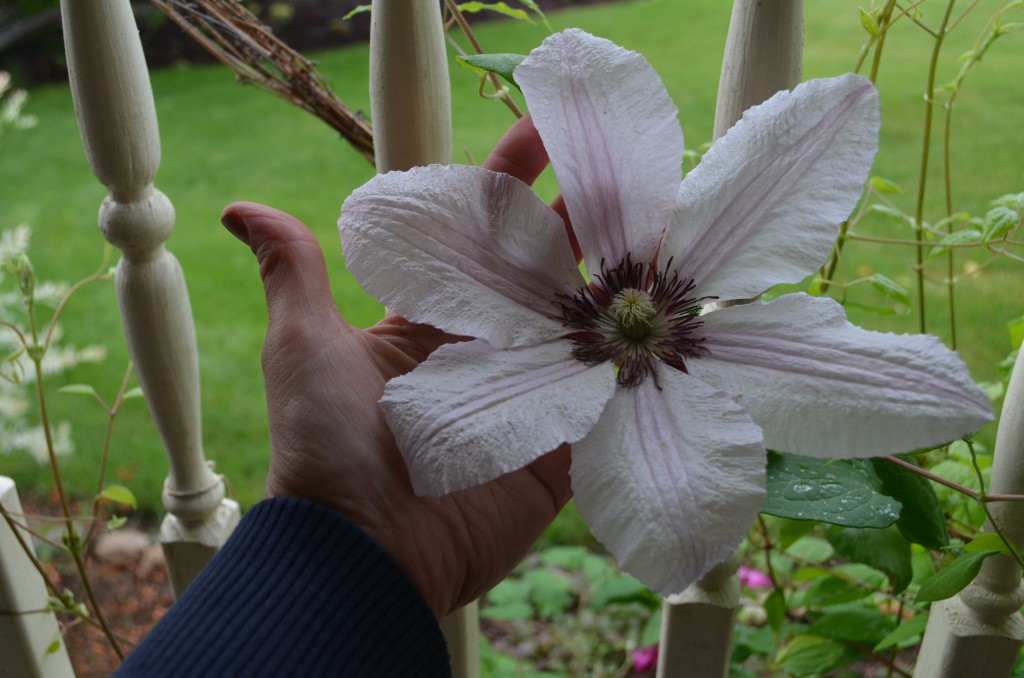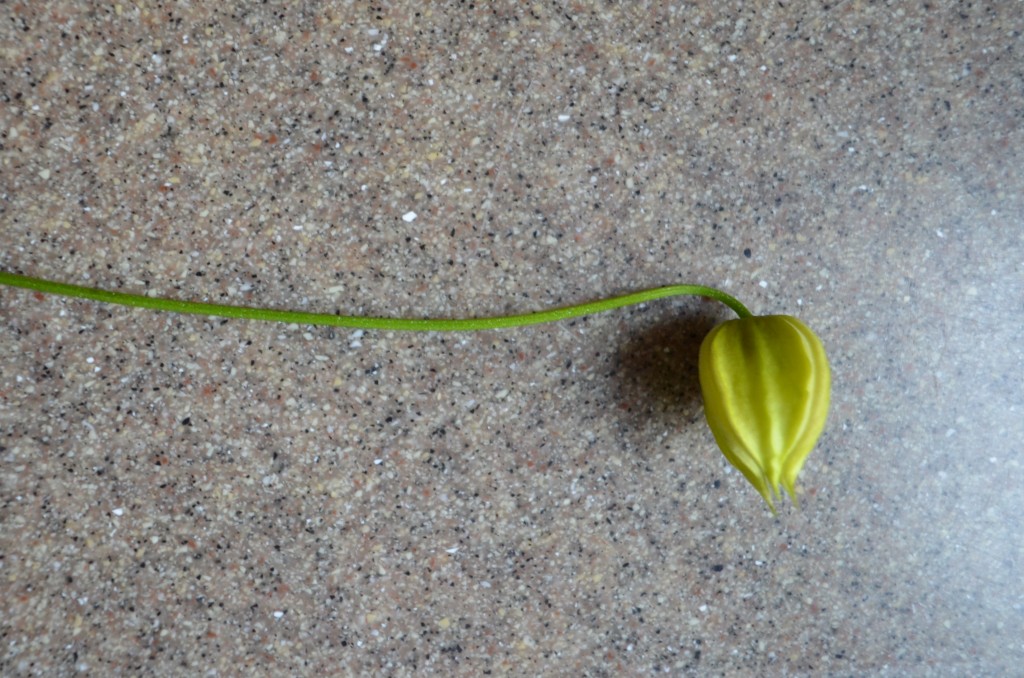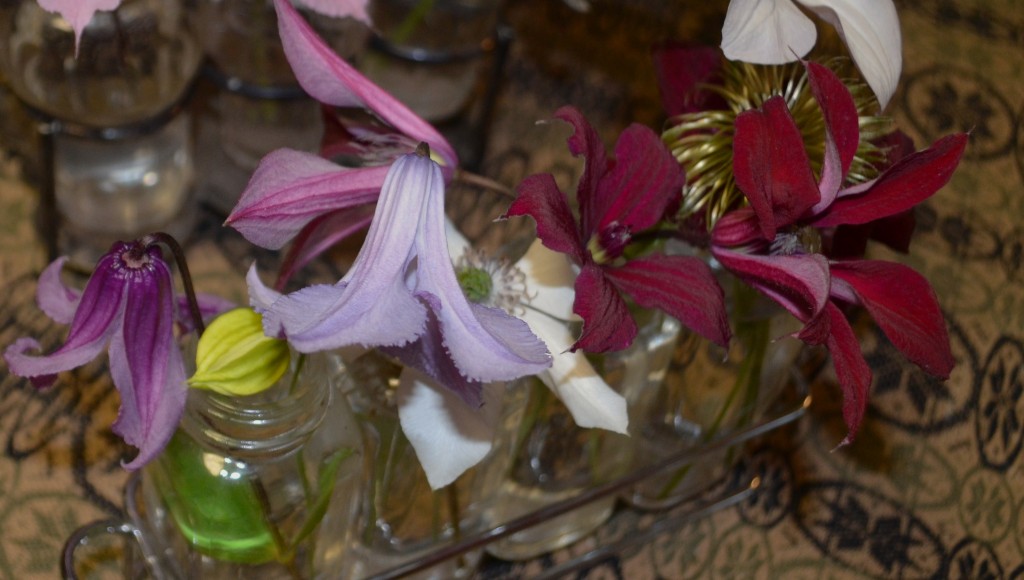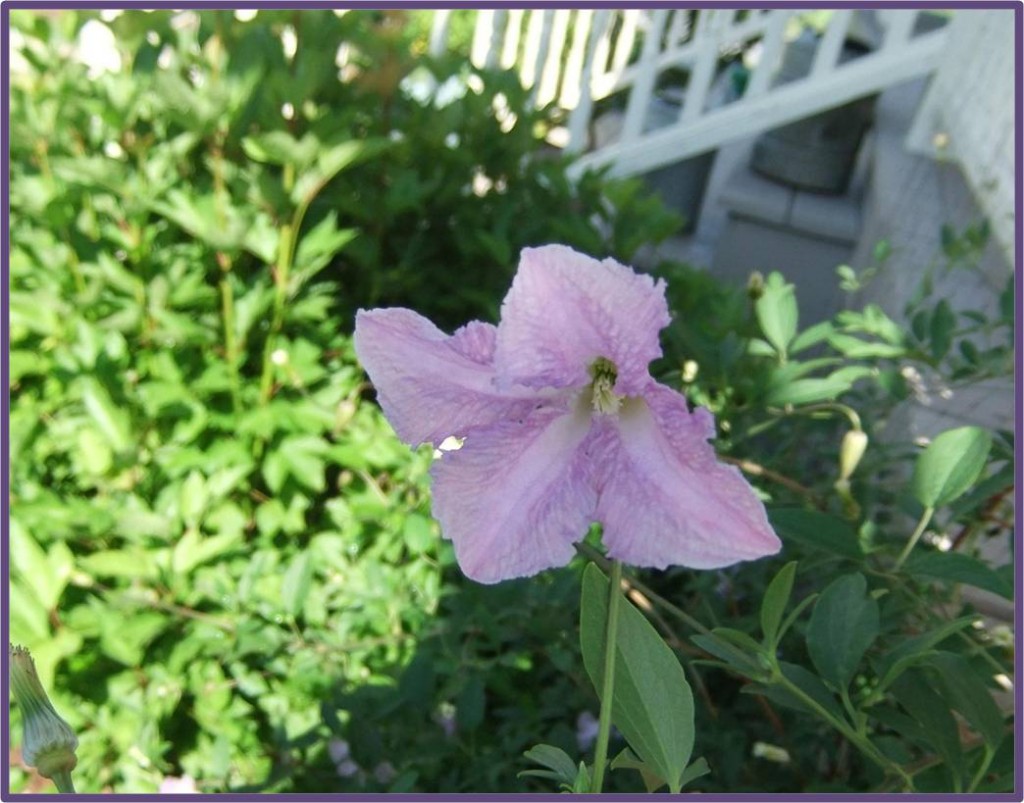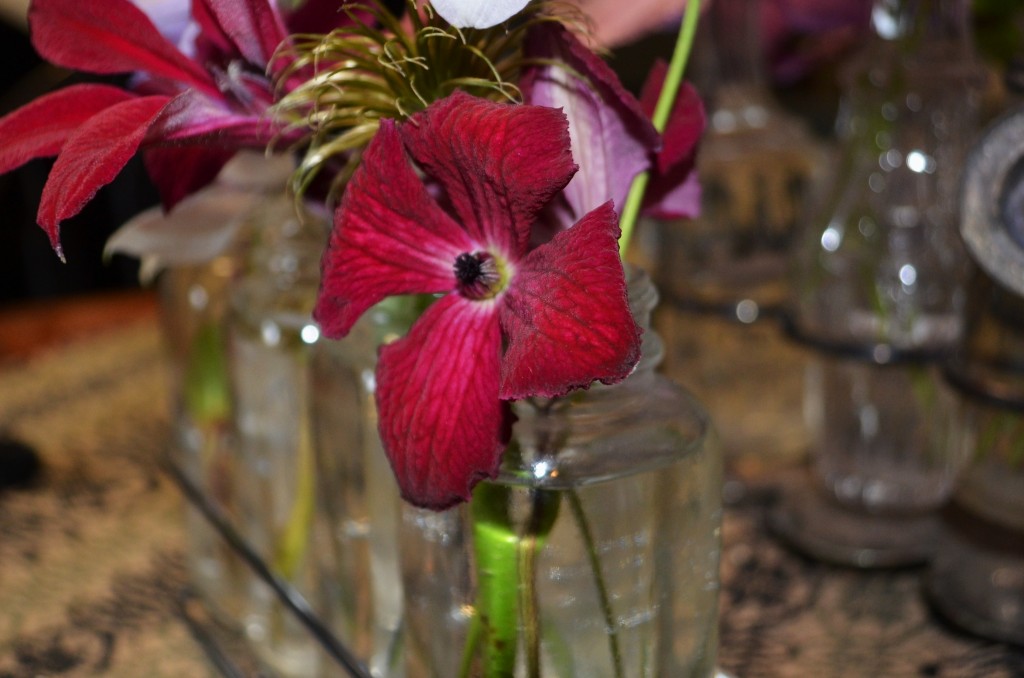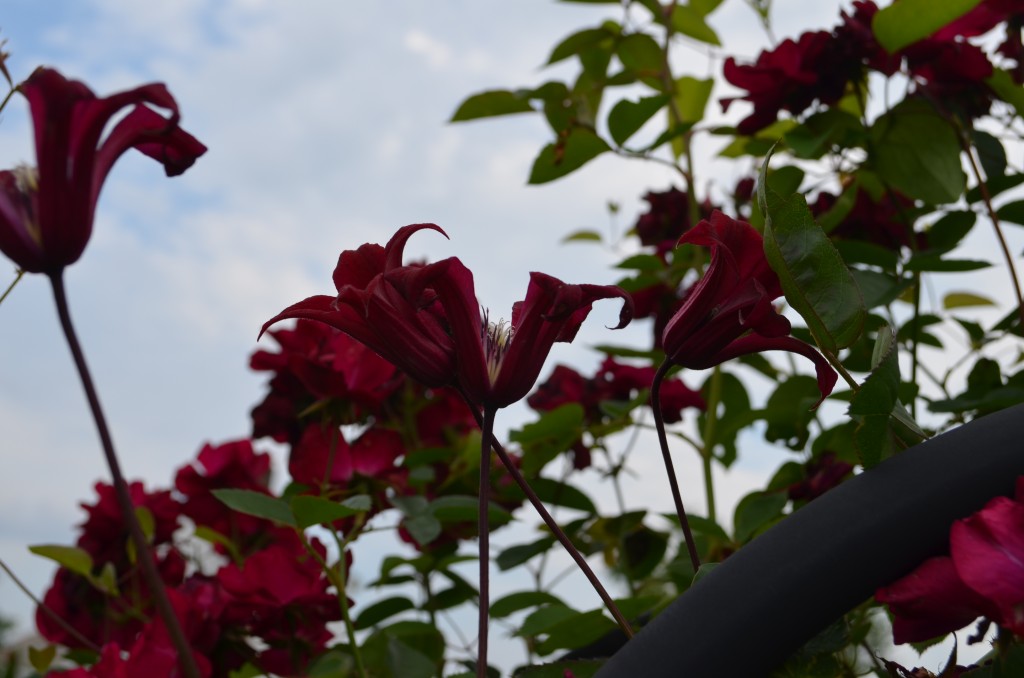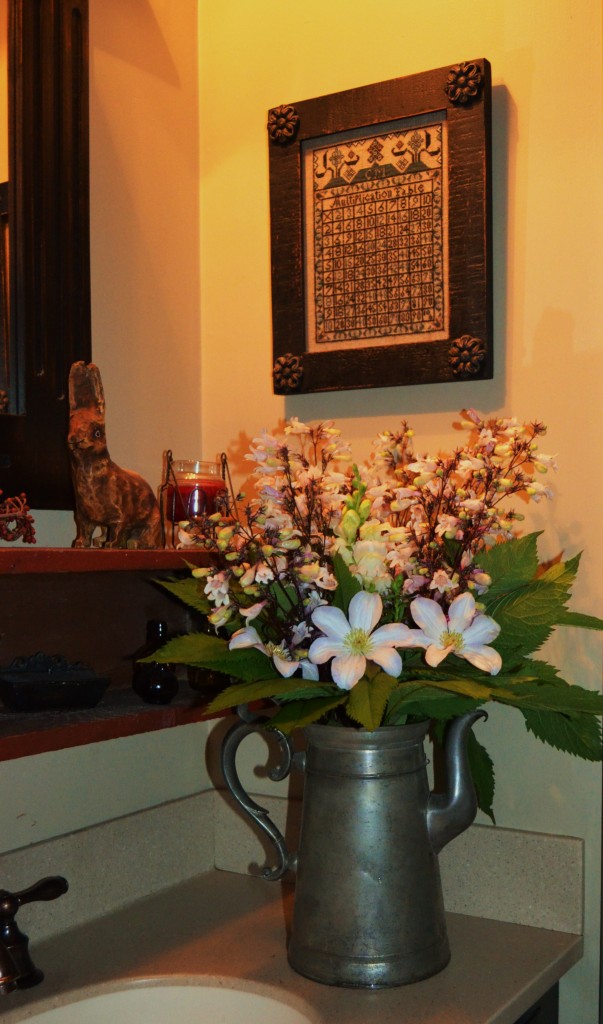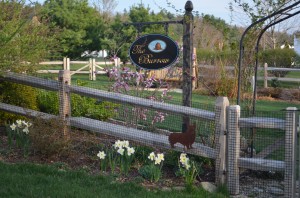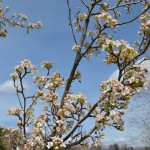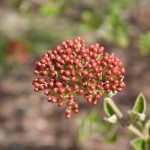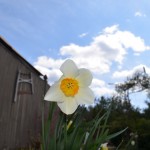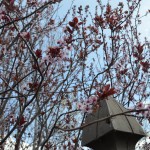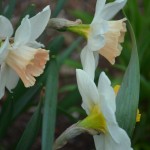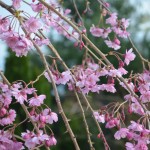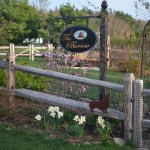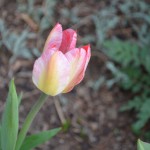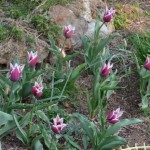I grow a number of honeysuckle ,or lonicera ,species in my garden and each has at least one attribute that makes it a must-have for me , and I would hope for you too.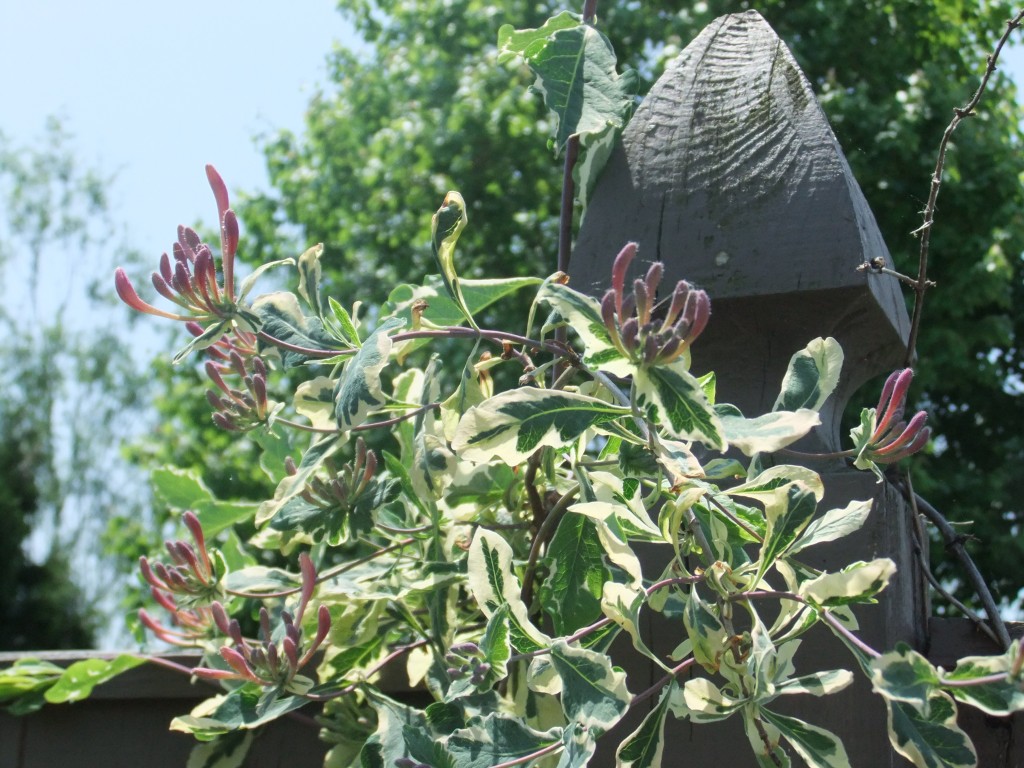
Lonicera periclymenum ‘Harlequin’ has beautifully shaped variegated leaves with yellow/white margins that turn a deep rose color in the fall. It sports dark pink buds that open to pastel pink and cram colored blooms that have a slight sweet fragrance. The foliage alone makes this a great choice for an arbor or against a fence as it is so beautiful. I grow 2 here, one behind and working its way into two large azeleas and one recently planted to climb on my new arbor tunnel out back.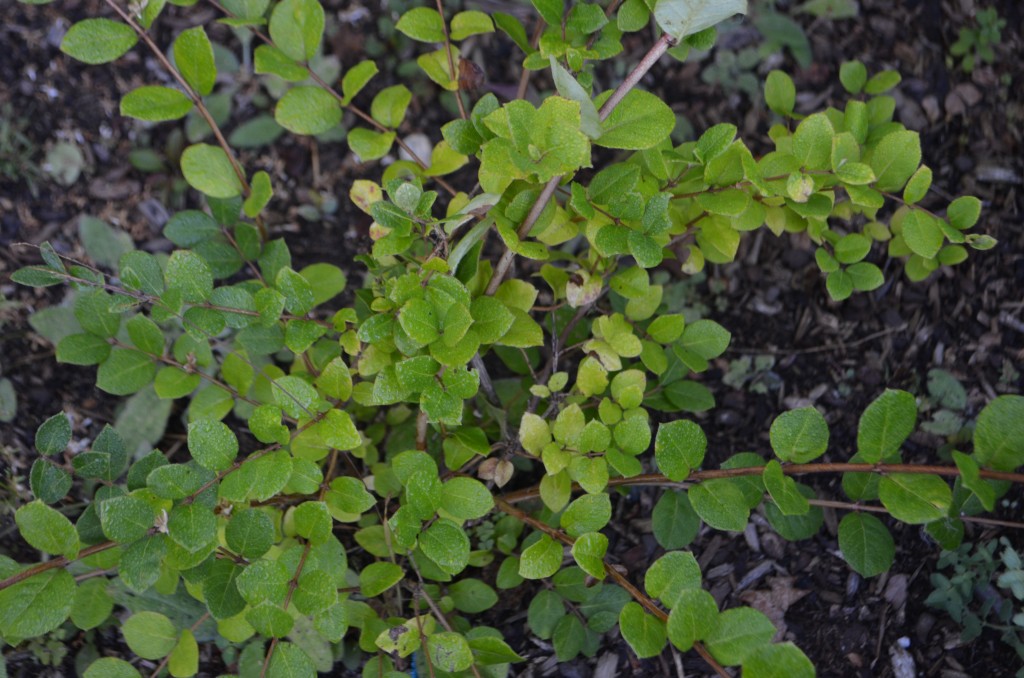
Lonicera fragrantissima (above) is often called winter or fragrant honeysuckle because it has flowers that emerge very early in the year that can scent the whole garden. It is worth its’ weight in gold because there few other plants that do much of anything in February and March, let alone give you a heavenly fragrance to enjoy. This honeysuckle is a shrub and well behaved especially given the family it belongs to. A few of its’ unruly cousins are out to conquer the world and difficult to manage in any garden. Not this guy! I wish I had room to have a whole hedge of them.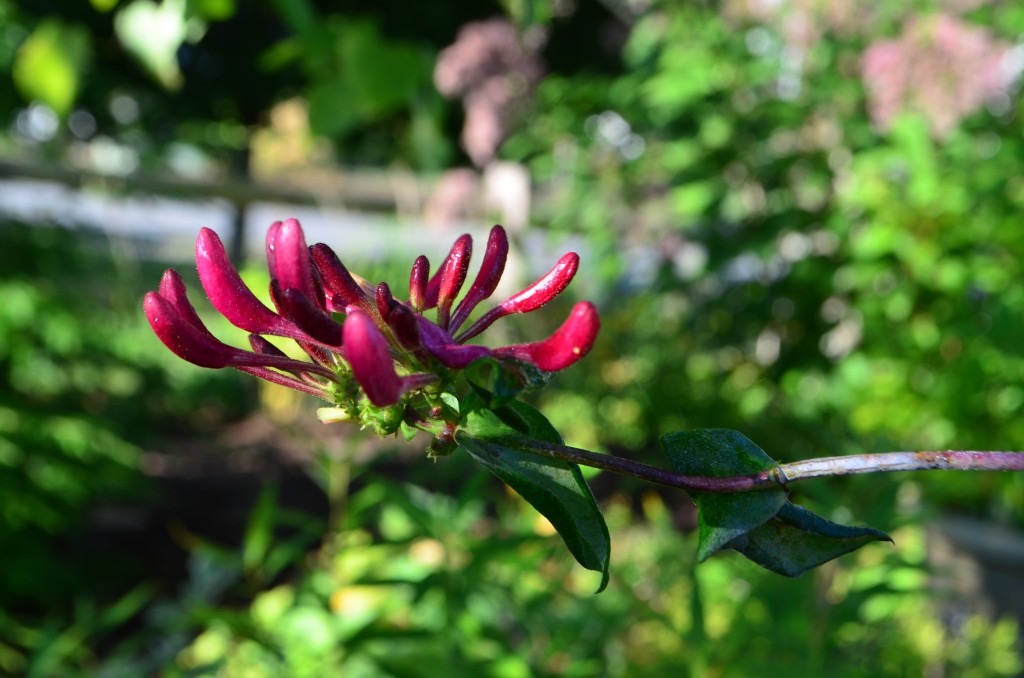
Lonicera periclmenum ‘Peaches and Cream’ (above) is a delightful new addition for me this year. It has lovely dark green foliage and grows to only 6 feet ,tops. White Flower Farm’s catalogue calls it “civilized” and I agree. It is compact and well mannered. This honeysuckle has large dark purple buds that open to dark pink and creamy white, fading to a peachy cream , hence the name. It has already cycled through two long bloom sessions here with a short break in between. It is touted as resistant to mildew on the leaves but I have read reviews that beg to differ. Only time will tell, but the blossoms are just lovely and sweetly scented too. 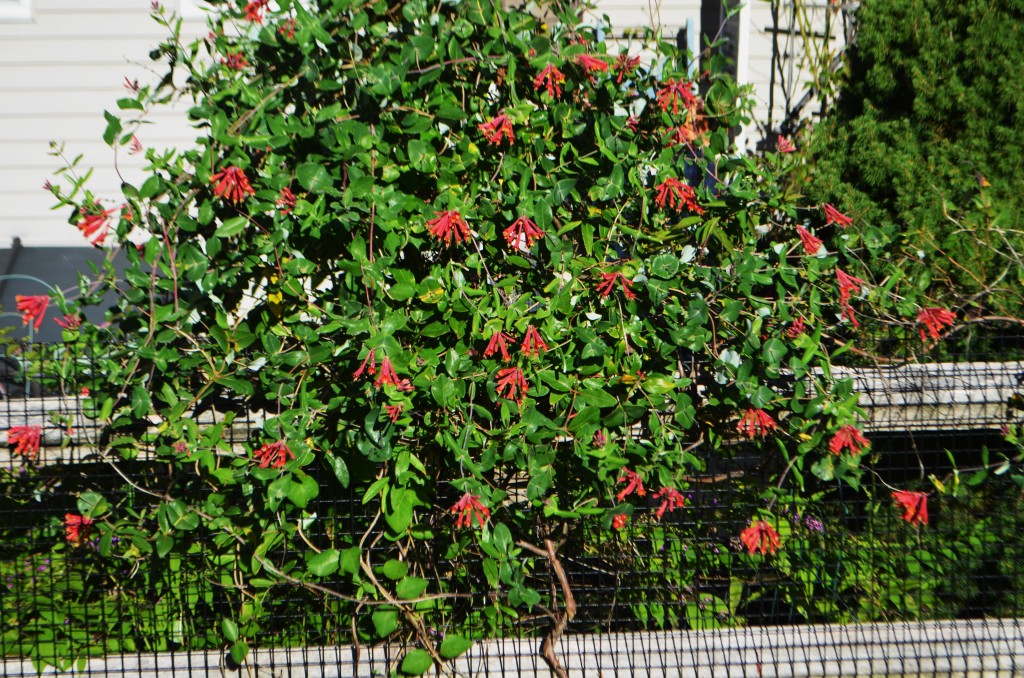
My favorite of all of them is Lonicera sempervirens “Major Wheeler” . I planted two of these bines* several years ago having ordered them from High Country Gardens on a whim.
Well, that was one great whim! The dark green foliage is clean of mildew all year and the plants begin to bloom very soon after the leaves emerge in the very early spring. I planted one on an obelisk right outside my kitchen window and it has turned out to be one of my happiest garden decisions as hummingbirds flock to the red tubular nectar filled flowers all summer long. Standing in front of the window with my first cup of coffee watching their antics is just about the best way to welcome the day I can think of.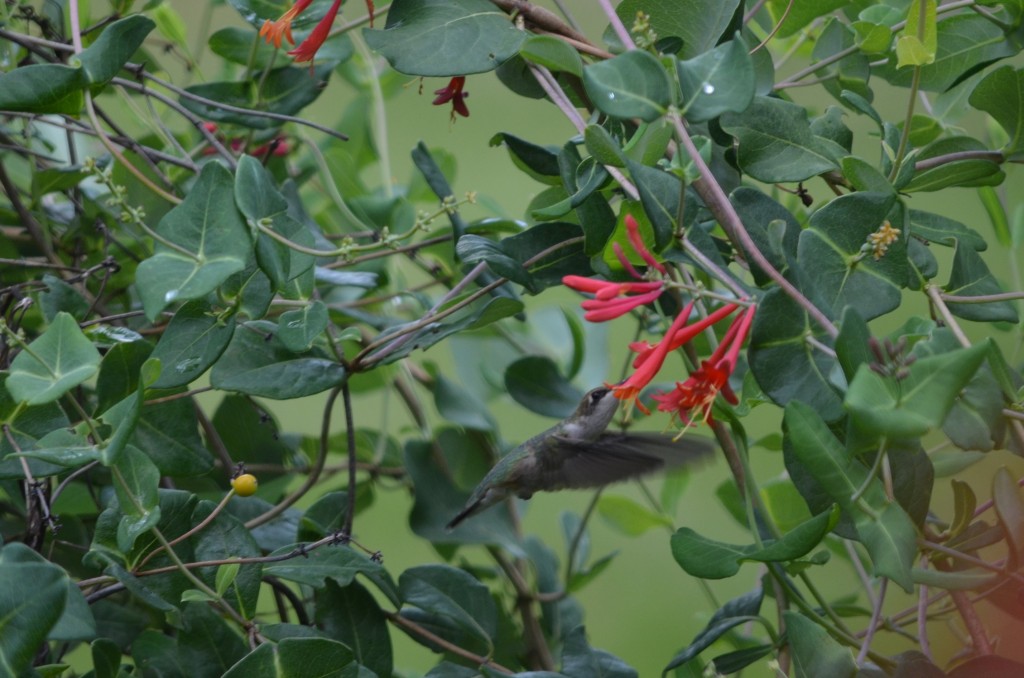
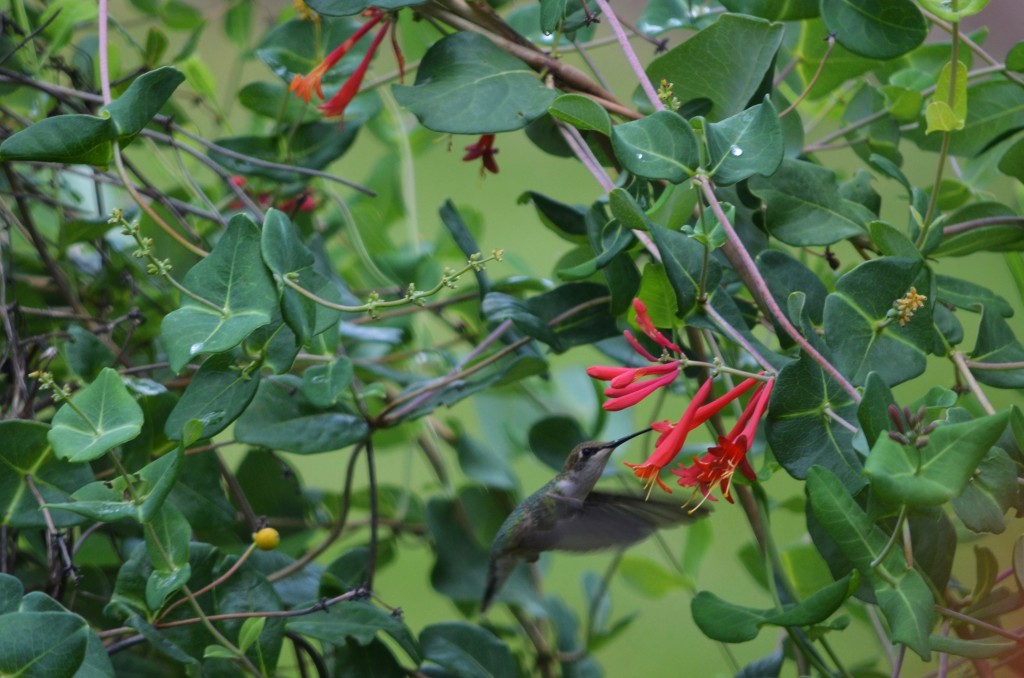
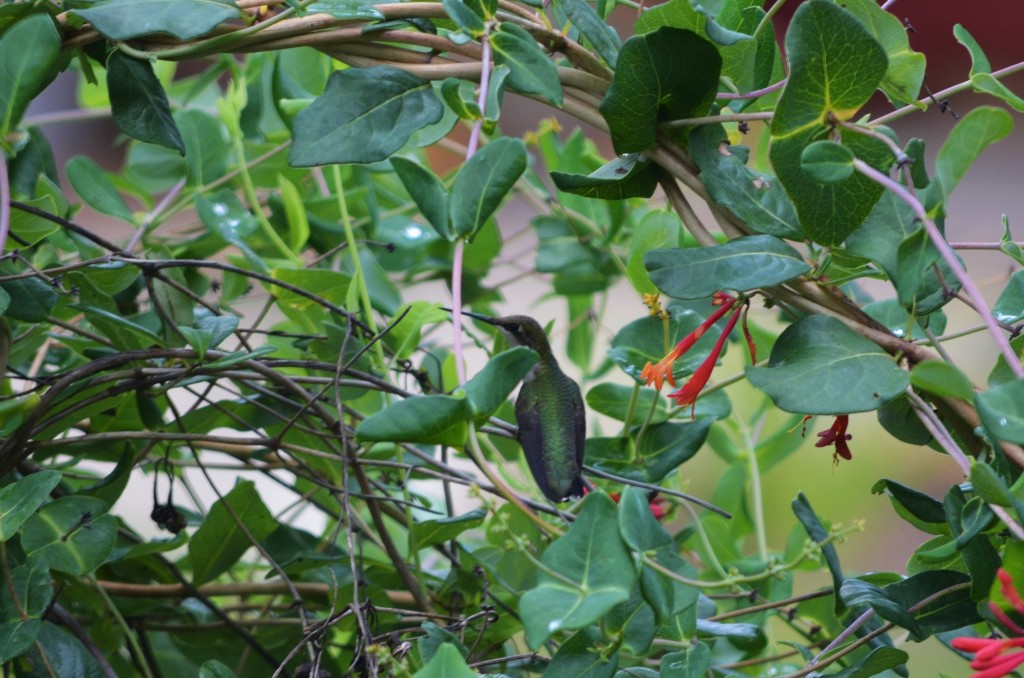
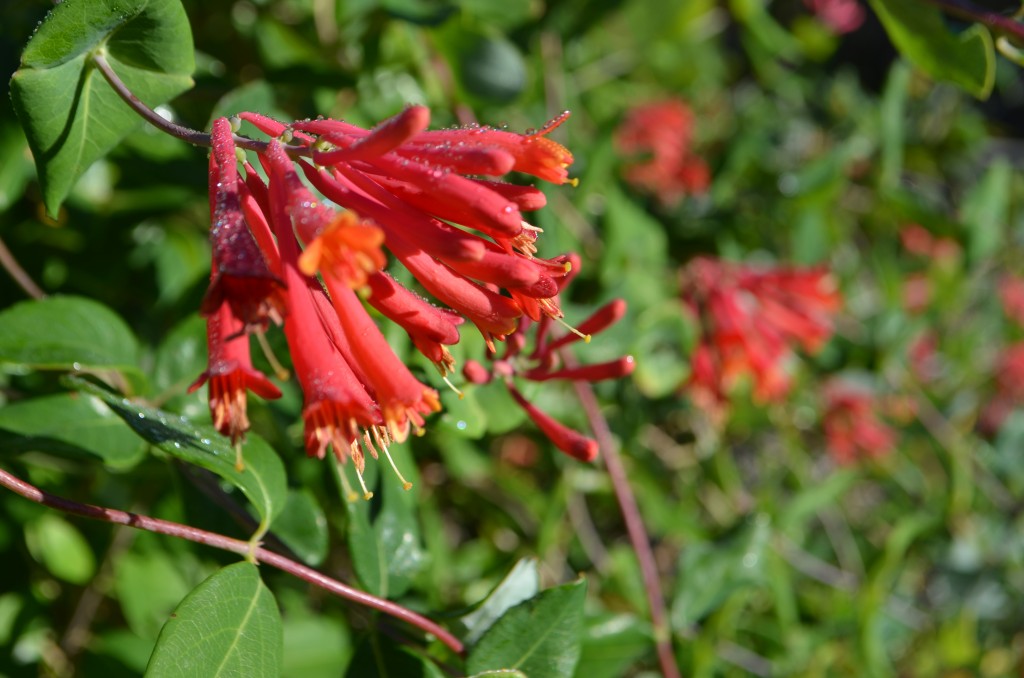
Major Wheeler is never ever for one millisecond out of bloom from spring until at least into December. I have cut flowers that are on the bines even after all the leaves have dropped an there is snow on the ground.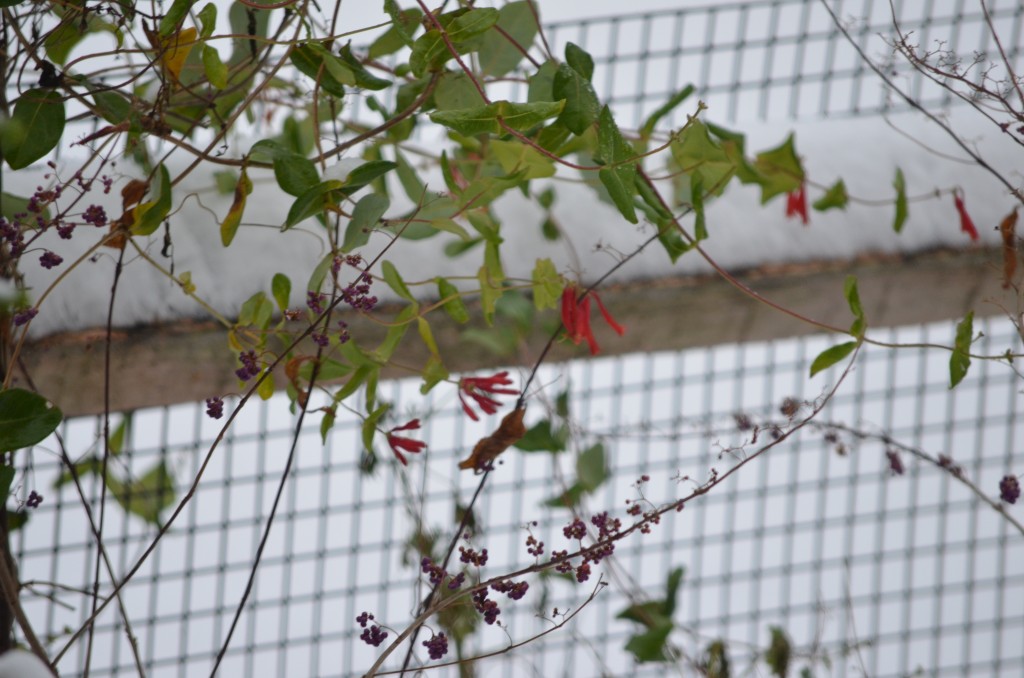
The second plant I bought was poorly sited in an area where the corgi dogs trampled it daily so I moved it last fall to the front fence. Now it can be enjoyed all season by the many walkers that take their daily constitutional around the mile loop that is my road. I hope they enjoy it as much as I do.
FYI , always use caution when picking and planting honeysuckle varieties. One in particular , Lonicera japonica, is a noxious weed that will cover any real estate it can reach and seed everywhere to boot. Many others are very large and can collapse a structure with their weight. Of course, you have some great choices here, so why look any further 😉
Also, honeysuckles like full sun and will perform poorly in shade. The ones listed here are all hardy to US zone 4 .
*bine is the word for climbing plants that twine around things when they grow. Wisteria, some honeysuckles, and hops are a few.
